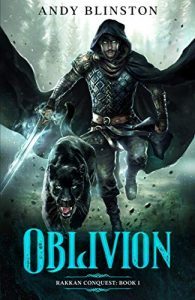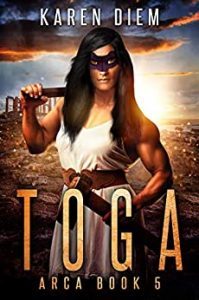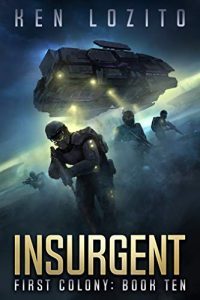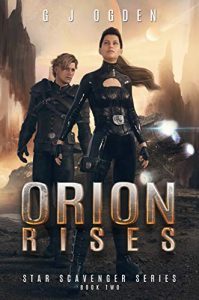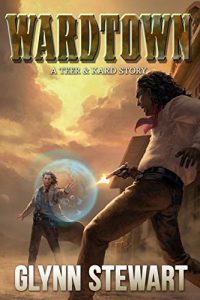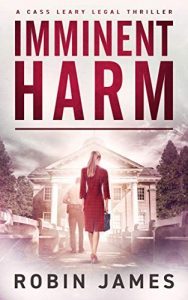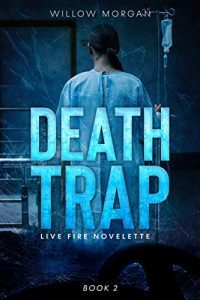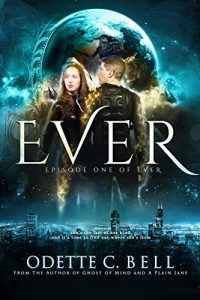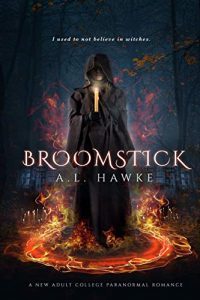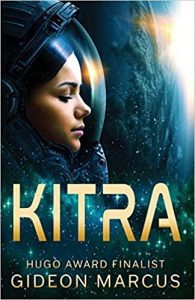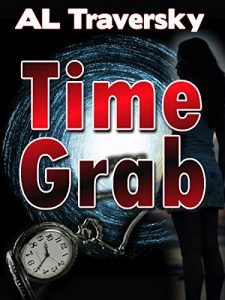Cora Buhlert's Blog, page 57
May 30, 2020
Indie Speculative Fiction of the Month for May 2020

It’s that time of the month again, time for “Indie Speculative Fiction of the Month”.
So what is “Indie Speculative Fiction of the Month”? It’s a round-up of speculative fiction by indie authors newly published this month, though some April books I missed the last time around snuck in as well. The books are arranged in alphabetical order by author. So far, most links only go to Amazon.com, though I may add other retailers for future editions.
Once again, we have new releases covering the whole broad spectrum of speculative fiction. This month, we have epic fantasy, urban fantasy, historical fantasy, dark fantasy, sword and sorcery, horror, paranormal mysteries, time travel romance, science fiction romance, space opera, military science fiction, weird westerns, dragons, ghosts, monsters, demons, knights, necromancers, immortals, superheroes, space marines, intergalactic relic hunters, tentacled terrors, crime-busting witches, swashbuckling cats and much more.
Don’t forget that Indie Speculative Fiction of the Month is also crossposted to the Speculative Fiction Showcase, a group blog run by Jessica Rydill and myself, which features new release spotlights, guest posts, interviews and link round-ups regarding all things speculative fiction several times per week.
As always, I know the authors at least vaguely, but I haven’t read all of the books, so Caveat emptor.
And now on to the books without further ado:
Once a god, now a target.
Darius wakes surrounded by blood. Most of his mind has been stolen, and the dark figure that took it wants the rest.
Caught in a centuries-old war between the human empire and fiery rakkan invaders, he soon learns his fearsome powers have made him an enemy to many.
Unable to tell friend from foe, he must fight to escape the one hunting him, the one who seeks to turn him into a mindless puppet.
His only allies are his panther and the captivating but callous Alexandra, who promises to restore him to former glory. But can she be trusted?
Is he ready to discover the truth of who he was, and why he’s wanted?
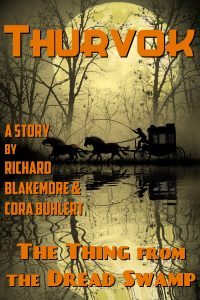 The Thing from the Dread Swamp by Richard Blakemore and Cora Buhlert:
The Thing from the Dread Swamp by Richard Blakemore and Cora Buhlert:
While travelling through the Dread Swamp, Thurvok, the sellsword, and his friends, Meldom, thief, cutpurse and occasional assassin, Meldom’s sweetheart Lysha and the sorceress Sharenna come across an overturned wagon and the terrified merchant Polyxo who babbles that a monster has taken his daughter Cerissa. Because they are heroes – and because Polyxo has offered them a sizeable reward – the quartet of adventurers offers to rescue Cerissa from the thing that lives in the Dread Swamp.
This is a short story of 5300 words or 19 print pages in the Thurvok sword and sorcery series, but may be read as a standalone. Includes an introduction and afterword.
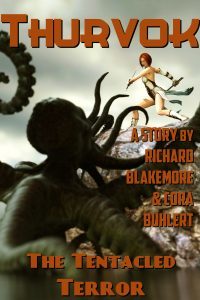 The Tentacled Terror by Richard Blakemore and Cora Buhlert:
The Tentacled Terror by Richard Blakemore and Cora Buhlert:
Thurvok, the sellsword, and his friends Meldom, thief, cutpurse and occasional assassin, the sorceress Sharenna and Meldom’s sweetheart Lysha set sail for the sunken city of Nhom’zonac, looking for the lost treasure of the Sea Kings. But they have to get past the Lovecraftian horror guarding the city first.
This is a short story of 5300 words or 19 print pages in the Thurvok sword and sorcery series, but may be read as a standalone. Includes an introduction and afterword.
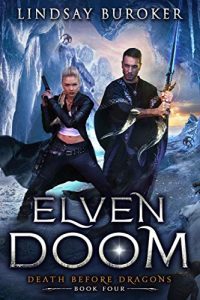 Elven Doom by Lindsay Buroker:
Elven Doom by Lindsay Buroker:
Dragons make life complicated. Extremely complicated.
After returning from Idaho, I was hoping to have time to figure things out with Zav—also known as Lord Zavryd, the dragon who claimed me as his mate without asking—but the dark elves are up to their old tricks again.
Actually, they’re up to far more deadly tricks, using more powerful magic than I knew existed. I have no idea how I’m going to stop them, but if I can’t, my entire city and everybody I care about could be obliterated.
To make matters worse, Zav’s sister has shown up and is rooting around in my life. His family doesn’t approve of me, and she plans to put an end to our relationship… one way or another.
[image error] Dragon Physician by Joyce Chng:
Can Jixin succeed in a world of dragon racing run by powerful women? Can he fight the system and fulfil his dream of becoming a dragon rider? Or does he choose instead to be a dragon physician like his mother? Jixin finds his world suddenly changed when Lu Si, the scion of a Rookery owner, takes a shine on him. He is plunged straight into the lucrative world of dragon racing… Will his life change?
Go home, myths , you’re drunk.
After a magical accident, part-time superhero Zita Garcia and her two closest friends wake up stranded in an ancient Greece that could only have existed if all the myths were real and somewhat inebriated.
Unfortunately, they can only leave with help from the locals, not all of whom are friendly. The dryads are downright deadly, and even the normally chatty centaurs aren’t talking. To convince them to assist, Zita and her friends will have to go questing, just like in all the classic fantasy novels. The ones Zita never bothered to read.
If they win, they’ll get the help they need.
If they don’t, they better get used to togas.
Toga is the fifth in the Arca superhero urban fantasy series and includes deliberate historical inaccuracies, immoderate language, lame sexual innuendo, and comic book violence.
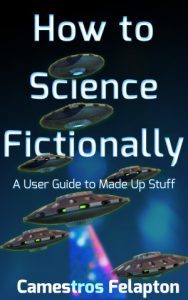 How to Science Fictionally: A User Guide to Made Up Stuff by Camestros Felapton:
How to Science Fictionally: A User Guide to Made Up Stuff by Camestros Felapton:
How can you make your space ship travel faster than light? How can you make your teleporter work? How are you going to send a message home and how are you going to style your beard? These and many other questions are often badly answered in this compendium of essays from Camestros Felapton. Ranging from flippant to occasionally researched, this book answers all of the least important questions in modern sci-fi.
Essential reading for aspiring science fiction authors.
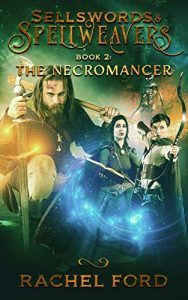 The Necromancer by Rachel Ford:
The Necromancer by Rachel Ford:
A rash of grave robberies. A cursed barrow. A case that will test the balance between magic and law.
When bodies turn up missing, the mage’s academy assigns the case to Apprentice Idun Wintermoon. With the jarl’s liaison for all things magical, Lissette Forlatt, and her best friend, the giant Njal, they try to track the thief.
But the closer they get to answers, the further away from truth they find themselves. When a series of strange visions brings Lissette to the ruins of the long abandoned goblin kingdom, they descend into a dark and terrible world of magic and secrets.
They’re in a race against time as they try to stop the Necromancer. But to get to her, they have to tread where the dead sleep – or worse, don’t.
And if they’re not careful, they’ll end up forgotten denizens of the undead themselves.
Banished, shipwrecked and sent to the arenas.
Trygve Bjarneson lost everything. And he deserved it. He knows that. So when he’s given the opportunity to regain some of his honor, and reclaim his life in the process, he takes it.
Little does the once future-king realize that the seemingly straightforward job of bodyguard to Empress Cassia is anything but. Machiavellian politics are just the beginning. He’s about to be plunged into a dark world of bloody murder, grim assassinations, and deadly rivalries. It will take every bit of cunning and ingenuity to protect the empress from her enemies.
But if his foes have their way, he will wish he never made it out of the arenas alive.
 Ghostly Business by Lily Harper Hart:
Ghostly Business by Lily Harper Hart:
Every “quiet” town has secrets. The one nobody expected is about to rock Whisper Cove.
During what should’ve been a romantic double date, a fire breaks out at a historic home. Harper Harlow and Jared Monroe race to the scene to make sure nobody is trapped or in danger … and discover one heck of a secret.
It seems the house, which was owned by a solitary older woman who kept to herself, was being run as a brothel. Now she’s dead and there’s a bevy of married men on the hot seat for her murder.
Harper has a cantankerous ghost to deal with … and a bevy of odd emotions running roughshod over her mental health. She feels like an invader in her own skin, and she can’t figure out why.
Jared’s problems are even more pronounced. Whenever he questions an individual present at the house that night, they threaten him with a legal suit before clamming up. On top of that, he’s worried about Harper, who seems fixated on the case.
Since the moment they met, they were joined at the hip … and lips. Now, that unshakeable bond they’ve always reveled in is going to be put to the test.
Nothing can break them apart … but that doesn’t mean outside forces won’t try, and they might be willing to kill to do it.
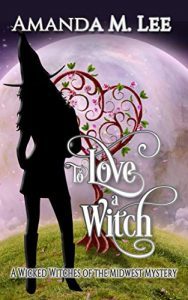 To Love a Witch by Amanda M. Lee:
To Love a Witch by Amanda M. Lee:
Bay Winchester is at a crossroads in her life. Her powers are growing, her personal life is settled, and there’s a young witch in crisis under her care.
Things are … difficult.
A good witch at heart, Bay knows that the teenager she’s trying to tame is dangerous. To keep Hemlock Cove safe, she’s isolated her at the campground property she owns with her boyfriend Landon. While visiting one day, a ghost catches her attention across the lake … and when Bay crosses to investigate, she finds a fresh body and a whole lot of trouble.
It seems the new property owner is currently dating the victim’s ex-boyfriend and there’s a convoluted mess to untangle. That’s on top of the other people in town – including Aunt Tillie’s nemesis Mrs. Little – who keep showing up at the lake with an agenda.
Bay has no idea what to do. She needs to keep her teenage protégé hidden while uncovering a deadly story of an affair gone wrong and greed run amok. All the while she wonders what will happen if she can’t turn things around for her new teenage responsibility. What will she have to do to protect the people that she loves?
If that wasn’t enough, Landon is acting out of sorts. His demeanor is strange and he’s having secret conversations with her mother while trying to keep Bay out of his sock drawer. She can’t figure out why and her imagination is running wild.
It’s going to be a race to the finish. There’s an out-of-control ghost, a teenager who doesn’t want to be helped, and a man who has a plan to give his favorite witch everything she’s ever wanted.
This is the one you’ve been waiting for. The big moment is finally here.
 The Whisper Killer by Rod Little:
The Whisper Killer by Rod Little:
Wolf Hollow is not like other towns. It gets what it needs.
Ben is a baby-faced serial killer who can charm his victims with a smile. But when he stumbles into Wolf Hollow to hide from the FBI, it’s the town that charms him and convinces him to stay. Because Wolf Hollow gets what it needs, and it needs Ben. It knows his secret.
Ben isn’t alone. He shares his body with a century-old demon. He may be the town’s worst nightmare, but he’s exactly what they need.
Under cover of a blinding snowstorm, a bitter enemy returns to Wolf Hollow, a group of men hell-bent on revenge, resolved to wipe out the entire town and leave no survivors. Only Ben has what it takes to stand in their way . . . if he chooses. He is their only hope.
Because some evils can only be met by a greater evil.
As Connor secretly searches for the enemy homeworld, he launches clandestine military operations to liberate other worlds in hopes of gaining allies before the enemy can find the last human colony.
The humans cannot hope to compete with the enemy’s vast empire, but with the discovery of a new ally, Connor believes their luck has finally changed.
Instead, when new allies clash with the old, Connor finds himself caught in the middle. Connor will have to choose whether doing what’s necessary to ensure the colony survives is worth compromising his loyalty to allies close to home, but the price could ultimately tear the colony apart.
Surviving a war with the enemy isn’t always a numbers game, but in choosing one ally, will Connor lose it all?
Kicked out of the Relic Guardian Force, Hudson Powell has started down the path to becoming a relic hunter. Fortune awaits inside the mysterious, alien hulks found on every planet throughout the vast network of portal worlds. The only problem is, he’s broke and he doesn’t have a starship.
A chance encounter with Liberty Devan – a streetwise, genius ship mechanic – provides him with an unlikely relic-hunting partner. Unfortunately, Hudson’s former RGF boss, Logan Griff, still wants him dead, and Griff has hired two of the galaxy’s deadliest mercenaries to get him.
Fortunately for Hudson, one of them has taken a shine to him.
Fighting to stay one step ahead of Logan Griff, Hudson and Liberty discover the first new portal in a century. But embarking on a relic hunt to a new and unexplored star system, they find an alien intelligence that warns them of a grave threat to humanity.
The secrets of the alien wrecks are about to be uncovered. And it isn’t good news.
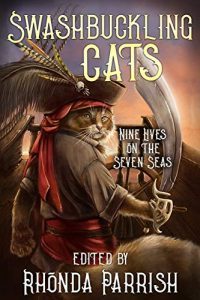 Swashbuckling Cats, edited by Rhonda Parrish:
Swashbuckling Cats, edited by Rhonda Parrish:
If you think cats and water don’t mix, think again.
Plunge into worlds of piratical cats: some selfish, some mischievous, all fond of hitting the catnip stash. From ships on the deep blue sea, to ships flying through the depths of space, and even visiting from beyond the veil, these cats are determined and on a mission.
Featuring thirteen “tails” of adventure-loving cats, puns, and fun by: Megan Fennell; S.G. Wong; Rebecca Brae; Grace Bridges; Lizz Donnelly; Blake Liddell; Frances Pauli; JB Riley; Joseph Halden; Leslie Van Zwol; Krista D. Ball; Chadwick Ginther; Rose Strickman; and Beth Cato.
Dawn
Who would have thought it? A one-night stand should have only been one night.
Then the hot guy shows up on my doorstep with a business proposal that stinks more than a Vanfian female in heat.
He’s hiding something. I just didn’t expect it to be an upcoming apocalypse.
I have no choice but to go all in, but the plan is to keep my heart protected from him.
Yeah right. My hormones are leading the way, and this guy isn’t going to let me slip from his grasp that easily.
Zelup
Life is just never easy, is it?
My older brother shacks up with the daughter of a goddess, and all of a sudden, our planet is pushed into an apocalypse.
And I’m forced to hunt down a mythical Guardian to aid us in the fight against the demon host that’s squared off to us.
What I don’t expect in my travels is to fall for a feisty scientist.
She sees through my crap and is hotter than Hades.
But I can’t afford to be distracted.
And yet, that’s exactly what I am. This Guardian can suck it. I’m more interested in convincing Dawn I’m her man, her protector.
Until the Crowned Prince of Hell gets her. His threat?
To erase me from her memory forever.
 1910: Love Reaches Through Time by Georgina Rowe:
1910: Love Reaches Through Time by Georgina Rowe:
Rowena Cutler loves her job as a researcher, delving into the history of her beloved city of Sydney. After one marriage and several failed relationships, she has given up on men and romance, and believes she is happily in control of her life…until a paranormal experience turns her life upside down.
While reading an old newspaper article from 1910, Rowena is flung from the present into the distant past where she experiences the very event she was reading about. She latches onto an object from the past just as she is pulled back to her own time period, and is startled to discover the object has made the trip across time with her!
Shaken but determined, Rowena begins using her newfound gift to solve some century-old mysteries of Sydney. Her extraordinary paranormal adventures have barely begun, however, when she falls desperately in love with a man named Lionel who lived in 1910. Even though he is not fully aware of her presence because he cannot see her, Rowena knows she has finally found the man of her dreams. But if Rowena and Lionel are ever to be together, she realizes she must explore the full extent of her psychic powers, no matter how dangerous the consequences.
A young man’s anger and gun
An old man’s secrets and magic
A moment that binds them forever
Teer was forced into exile in the Spehari’s Eastern Territories after they betrayed his father’s memory, leaving him and his mother destitute. He has grown up on the ranch of his mother’s new husband, nursing the skills of a cowboy and the anger of a betrayed child.
When one of the demigod-like Spehari walks into his bar, Teer gives in to a pointless moment of anger—opening fire on one of the rulers of the Unity!
Sentenced to hang for his crime, Teer’s life hangs by the slimmest of threads: the mercy and secrets of the very immortal he tried to kill…
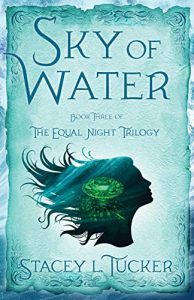 Sky of Water by Stacey L. Tucker:
Sky of Water by Stacey L. Tucker:
This final installment of the Equal Night trilogy will put Skylar to her biggest test to date. After Magus takes her through the alchemical door in the Quine library, she quickly remembers her strange surroundings and the reason she’s been brought back to the First Age. Here, she will have to rely on her own magic to navigate the overlapping timelines that will allow her to rewrite history. But if she’s not careful, she could destroy it completely.
Back home, it will take every one of Skylar’s loved ones to execute Ocean’s plan, and Argan has the biggest role among them: the impossible task of retrieving Skylar home from the past. Luckily, it’s something he’s been training for his entire life.
Meanwhile, a woman now sits in the Oval Office, the corrupt scaffolding of the US government collapsing around her. Mica Noxx has a vision for the US, one that returns it to the original intention of the Founding Fathers.
With Skylar held in the First Age and Mica planted in current day, they have one shot to banish the darkness that’s held control for centuries, and return the United States to a trajectory toward its true destiny: becoming the New Atlantis.
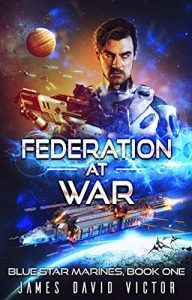 Federation at War by James David Victor:
Federation at War by James David Victor:
An old war is about to undergo an alien transformation.
Alone in the galaxy, humanity has waged war against itself in the name of order and personal freedom. When a new alien threat arrives on their doorstep, they will have to face a reality most don’t believe. They are not alone amongst the stars. And worse, they are far from superior.
Federation At War is the first book in the Blue Star Marines series which follows a young man who will have to push his hatreds aside and come to the aid of all humanity.
Download Federation At War and see if humanity can overcome itself and survive in the vast darkness of space!
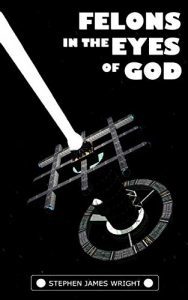 Felons in the Eyes of God by Stephen James Wright:
Felons in the Eyes of God by Stephen James Wright:
The planet Thyrhucis is prosperous and peaceful, governed by a collective of uploaded post-human intelligences called the Necrarchy. Thyrhucis is a nexus for interstellar travel, and governments from all over the galaxy are seeking access to its trade routes.
Christabel Cameron Carrington wants access for the Cultural Revival, a multi-system movement that’s bringing back old Earth cultures. She’s not above using underhand methods, including hacking the planetary data networks, which brings her into direct contact with the Necrarchy itself.
Rethis Veid wants access for the spartan world of Thur, a grim and expansionist state that’s considered suspect by everyone. He’s involving himself with dissident groups, whose concerns about the Necrarchy become disturbingly relevant.
Laura Sabon, light years away, knows nothing about this – her only concern is keeping her decrepit space freighter operational. But she’s drawn into the situation when her ship is chartered to take a cargo to Thyrhucis – a cargo which just might contain the end of interstellar civilization.
 The Ninth Knight by Stephen James Wright:
The Ninth Knight by Stephen James Wright:
Prosperous and middle-aged, Sir Gaveran yearns for knightly adventure and chivalrous deeds. He persuades seven other knights to meet with him – rich and powerful Garrien, upcoming knight-errant Perinell, poor but honest Calan, aesthetic Lyas, foreigner Rykon, masked and enigmatic Yvon, and ill-omened Alair. Gaveran persuades them all to join him in an oath, to seek adventure in the coming year….
But, as the eight knights swear on their swords, a ninth blade is laid across theirs – and the shadowy figure of the Ninth Knight follows each knight as they quest, observing them and, perhaps, judging them.
 Send to Kindle
Send to Kindle
May 29, 2020
Indie Crime Fiction of the Month for May 2020
 Welcome to the latest edition of “Indie Crime Fiction of the Month”.
Welcome to the latest edition of “Indie Crime Fiction of the Month”.
So what is “Indie Crime Fiction of the Month”? It’s a round-up of crime fiction by indie authors newly published this month, though some April books I missed the last time around snuck in as well. The books are arranged in alphabetical order by author. So far, most links only go to Amazon.com, though I may add other retailers for future editions.
Our new releases cover the broad spectrum of crime fiction. We have cozy mysteries, small town mysteries, historical mysteries, Jazz Age mysteries, 1930s mysteries, 1950s mysteries, paranormal mysteries, crime thrillers, psychological thrillers, domestic thrillers, legal thrillers, medical thrillers, action thrillers, horror thrillers, police procedurals, romantic suspense, noir, private investigators, amateur sleuths, police officers, lawyers, spies, terrorists, drug dealers, yakuza, serial killers, dark secrets, sinister mansions, deadly cruises, crime-busting witches, crime-busting socialites, crime-busting librarians, crime and murder in Miami, Los Angeles, Louisiana, California, Norfolk, Paris, Columbia, the Panama Canal and much more.
Don’t forget that Indie Crime Fiction of the Month is also crossposted to the Indie Crime Scene, a group blog which features new release spotlights, guest posts, interviews and link round-ups regarding all things crime fiction several times per week.
As always, I know the authors at least vaguely, but I haven’t read all of the books, so Caveat emptor.
And now on to the books without further ado:
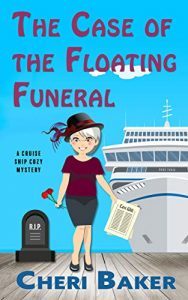 The Case of the Floating Funeral by Cheri Baker:
The Case of the Floating Funeral by Cheri Baker:
Wealthy entrepreneur and famed gambler Morgan Picklewick is dead, and his family and friends are coming aboard the S.V. Adventurous Spirit for the memorial service at sea. As the ship heads to sunny South America, Morgan’s heirs will scatter his ashes in the deep blue waters of the Panama Canal. But not everything is as it seems. Morgan’s business partner and friend, Roberta Crowley, strongly suspects that he was murdered by one of his children.
Did one of Morgan’s children kill their father to avoid being disinherited? As Ellie mingles with the mourners, it seems everyone is hiding a motive or two. Perhaps one of his wealthy business partners saw an opportunity to take a bigger piece of the pie? And what about his ex-wife? Is her diva-like behavior covering a guilty conscience? As Morgan’s heirs prepare to seize their father’s stake in the cruise line, with devastating consequences for the crew, Roberta gives Ellie her most difficult assignment yet: Identify Morgan’s killer before the crew is torn apart and scattered to the four winds, forever.
 Death in the Beginning by Beth Byers:
Death in the Beginning by Beth Byers:
June 1938
A new baby, an elopement, an unexpected visitor. Georgette Dorothy Aaron and her family of orphans knew it would be an exciting summer, but none of them expected to be drawn into yet another murder investigation.
When they band together, however, surely they can accomplish anything.
 The Darkest Garden by Stacy Claflin:
The Darkest Garden by Stacy Claflin:
How many secrets can one house hide?
Kenzi Brannon has always dreaded going down to the dark basement of the old Brannon house she grew up in. Now an adult, she’s returned home to find her apprehension has intensified. She avoids that locked door and the secrets beyond in hope that ignoring the problem will keep long-forgotten horrors buried.
A neighbor’s obsession with her house and history has rekindled Kenzi’s old fears. And reconnecting with someone from her past may force her to face what she’s been running from her entire life.
And that might not be the worst of it.
The garden her family is restoring could conceal something far more terrifying than anything inside the house. Something that could rip her newly found family apart.
Some people say the truth will set you free. Kenzi can’t help but feel that it will destroy everything.
 When You Start to Miss Me by Stacy Claflin:
When You Start to Miss Me by Stacy Claflin:
She’s there for everyone. But who’s there for her?
Malia is the glue that holds her dysfunctional family together. Her two brothers need constant attention, the family business drains her, and her narcissistic parents are on the verge of divorce. All that leaves her little time for herself. But when her brother nearly dies in her arms, she’s terrified she isn’t enough to save him.
Then Lincoln walks into her life at that crucial moment.
Linc’s got real pain in his past, pain that’s made him harden his heart. Even so, he can’t walk away from Malia—not the night he meets her, and not afterward. She might just be the thing that helps him risk love again.
But Malia has secrets that make her try to push him away, secrets some people would do anything to protect. When Linc forces them to light, he puts her in jeopardy, making him once again face the fear of losing someone he loves. And this time, he doesn’t think he can survive it.
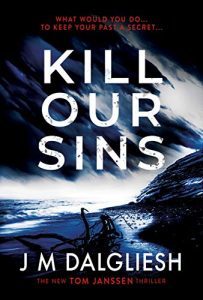 Kill Our Sins by J.M. Dalgliesh:
Kill Our Sins by J.M. Dalgliesh:
What would you do to keep your past a secret?
When the mutilated remains of a woman are retrieved by local fishermen, it falls to DI Tom Janssen and his team to identify how she came to be in the water and what put her there. Joined on the case by his new permanent boss, DCI Tamara Greave, it remains to be proven if the woman’s death was as a result of foul play or a tragic accident.
The victim carried no means of identification, was poorly dressed for the winter and horribly disfigured when pulled from the water. As the case progresses old ghosts return to haunt those living in the present. Matters thought settled a long time ago face intense scrutiny… attention that some hoped would never come to pass. When childhood friends begin to question one another, suddenly the long forgotten past comes to the fore.
The misadventure of youth can have grave consequences. No matter how much time passes nor how deep you bury them, your sins will always return to haunt you. But who has the most to lose and what else are they willing to sacrifice in order to keep what they have? Is someone prepared to kill for their sins?
Janssen must reveal and catch a killer without a conscience before they strike again…
 The Man Who Never Was by Mark Dawson:
The Man Who Never Was by Mark Dawson:
Can the man who never was catch the criminals who never get caught?
John Milton is used to operating in the shadows, weaving his way through dangerous places behind a fake identity. Now, to avenge the death of a close friend, he must wear his mask of deception once more.
Beau Baxter was brutally murdered by a drugs cartel but that doesn’t stop Milton from blaming himself for his friend’s death. With the help of a trusted team of undercover experts and Beau’s son, Milton is determined to track down the killers. And he isn’t just after the man who gave the order. He’s heading right for the top.
Milton plans to follow the trail of cocaine from the nightclubs of Amsterdam all the way to its source in Colombia. Disguised as an ambitious buyer, he’s prepared to work his way up the cartel hierarchy one rung at a time. But the ladder can be slippery and, as Milton travels deeper into a world of violence, ruthlessness and greed, he finds himself in a jungle that could prove impossible to escape.
 Bullets and Beads by Jana DeLeon:
Bullets and Beads by Jana DeLeon:
Let the good times roll?
It’s Mardi Gras time and Fortune is looking forward to seeing the spectacle firsthand, but when a visitor to Sinful is murdered during the celebration there, Fortune, Ida Belle, and Gertie can’t help but wonder what happened. As they start looking into the woman and the family in Sinful she came to visit, their investigation sends them to New Orleans, right at the height of the Mardi Gras celebration. But instead of relaxing a little and enjoying the festivities, Fortune can’t shake the feeling that she’s being watched.
When she catches sight of her father in the Mardi Gras crowd, she knows why.
Unfortunately, her father’s presence in Louisiana has brought with it a host of terrorists, all with only one thing in mind—locate and terminate Dwight Redding. Can Fortune, Ida Belle, and Gertie manage to evade the killers long enough to figure out why Dwight has returned from the dead? And will knowing the answer make things worse or better?
 Ghostly Business by Lily Harper Hart:
Ghostly Business by Lily Harper Hart:
Every “quiet” town has secrets. The one nobody expected is about to rock Whisper Cove.
During what should’ve been a romantic double date, a fire breaks out at a historic home. Harper Harlow and Jared Monroe race to the scene to make sure nobody is trapped or in danger … and discover one heck of a secret.
It seems the house, which was owned by a solitary older woman who kept to herself, was being run as a brothel. Now she’s dead and there’s a bevy of married men on the hot seat for her murder.
Harper has a cantankerous ghost to deal with … and a bevy of odd emotions running roughshod over her mental health. She feels like an invader in her own skin, and she can’t figure out why.
Jared’s problems are even more pronounced. Whenever he questions an individual present at the house that night, they threaten him with a legal suit before clamming up. On top of that, he’s worried about Harper, who seems fixated on the case.
Since the moment they met, they were joined at the hip … and lips. Now, that unshakeable bond they’ve always reveled in is going to be put to the test.
Nothing can break them apart … but that doesn’t mean outside forces won’t try, and they might be willing to kill to do it.
Her reputation is on the line. A woman’s life is in danger. Can she stop them both from flatlining?
Lawyer Cass Leary is desperate for a break from her family drama. And when a local judge asks for help protecting his sister from domestic abuse, she sees an opportunity to resurrect her career. But the case quickly turns ugly when her client vanishes without a trace.
Convinced the volatile husband is behind the disappearance, Cass doubles down on her frantic search. But she’s unprepared for the tragic twist that could upend the entire Delphi court system…
With powerful figures circling, can Cass expose the shocking truth before her voice is silenced?
Imminent Harm is the sixth book in the high-octane Cass Leary Legal Thriller Series. If you like strong female leads, gripping courtroom conflict, and page-turning suspense, then you’ll love Robin James’s riveting novel.
 To Love a Witch by Amanda M. Lee:
To Love a Witch by Amanda M. Lee:
Bay Winchester is at a crossroads in her life. Her powers are growing, her personal life is settled, and there’s a young witch in crisis under her care.
Things are … difficult.
A good witch at heart, Bay knows that the teenager she’s trying to tame is dangerous. To keep Hemlock Cove safe, she’s isolated her at the campground property she owns with her boyfriend Landon. While visiting one day, a ghost catches her attention across the lake … and when Bay crosses to investigate, she finds a fresh body and a whole lot of trouble.
It seems the new property owner is currently dating the victim’s ex-boyfriend and there’s a convoluted mess to untangle. That’s on top of the other people in town – including Aunt Tillie’s nemesis Mrs. Little – who keep showing up at the lake with an agenda.
Bay has no idea what to do. She needs to keep her teenage protégé hidden while uncovering a deadly story of an affair gone wrong and greed run amok. All the while she wonders what will happen if she can’t turn things around for her new teenage responsibility. What will she have to do to protect the people that she loves?
If that wasn’t enough, Landon is acting out of sorts. His demeanor is strange and he’s having secret conversations with her mother while trying to keep Bay out of his sock drawer. She can’t figure out why and her imagination is running wild.
It’s going to be a race to the finish. There’s an out-of-control ghost, a teenager who doesn’t want to be helped, and a man who has a plan to give his favorite witch everything she’s ever wanted.
This is the one you’ve been waiting for. The big moment is finally here.
 The Whisper Killer by Rod Little:
The Whisper Killer by Rod Little:
Wolf Hollow is not like other towns. It gets what it needs.
Ben is a baby-faced serial killer who can charm his victims with a smile. But when he stumbles into Wolf Hollow to hide from the FBI, it’s the town that charms him and convinces him to stay. Because Wolf Hollow gets what it needs, and it needs Ben. It knows his secret.
Ben isn’t alone. He shares his body with a century-old demon. He may be the town’s worst nightmare, but he’s exactly what they need.
Under cover of a blinding snowstorm, a bitter enemy returns to Wolf Hollow, a group of men hell-bent on revenge, resolved to wipe out the entire town and leave no survivors. Only Ben has what it takes to stand in their way . . . if he chooses. He is their only hope.
Because some evils can only be met by a greater evil.
 The White Death by Willow Morgan:
The White Death by Willow Morgan:
It’s Tessa Newbridge’s first ever live fire exercise as a Cadet in the LAPD Police Academy. She’s certain to graduate. She just has to get through the sealed course she’s been through five times before—without live fire.
Running out of ammunition with the exit in sight, she’s ready to finish the course when, out of nowhere, two strange men jump the fence into her line of fire.
That startling incident spins Tessa off into a nightmare whirlwind of danger, intrigue, and mystery that could blow her whole world apart, to say nothing of the country itself.
Nothing and no one is what she thought they were and hidden enemies and unknown allies emerge from every side.
Can she dig deep enough to find the resources within herself to overcome all the forces closing in around her, or will they destroy her and everything she holds dear?
By some miracle, Tessa Newbridge somehow survives the terrible car accident escaping the White Death Yakuza. Now she’s a sitting duck in a hospital bed with nothing and no one to stop the assassins finding her.
LAPD doesn’t seem to notice or care that the most dangerous crime syndicate on the planet wants her dead, and where is Leon Griggs, the hero Detective who saved her life?
Are the very Police officials assigned to protect her erasing the evidence that a tattooed member of the Yakuza is about to be elected President of the United States?
Tessa can forget about saving the world from impending disaster. She’s got her hands full just making it through the next few hours before her enemies finally catch up with her and she might not be the only one who pays the price.
Can she escape from this death trap before time runs out for her and those she loves?
 Murder at the Fashion House by Sonia Parin:
Murder at the Fashion House by Sonia Parin:
Evie, Countess of Woodridge, is on a mission to rescue her favorite modiste from the consequences of an unfavorable review. Her quest is a timely diversion as her granny, Toodles, appears to be suffering from a case of restlessness.
All goes well until Evie’s public clash with the journalist responsible for the article is followed by the journalist’s death. The circumstances are suspicious and the police is warning Evie to stay away from the case.
While she is happy to comply with the detective’s request, the killer has other ideas and goes one step too far…
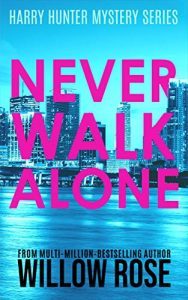 Never Walk Alone by Willow Rose:
Never Walk Alone by Willow Rose:
The world is on lockdown due to a virus that originated in Miami.
A woman is kidnapped from her apartment, and Detective Harry Hunter is on the case.
At the same time, his sister shows up after they haven’t seen each other in a year.
As it turns out, Harry’s sister knows more about the virus than she lets on. Soon, he wonders if the virus is connected to the missing woman.
As he digs deeper into the strange mystery, he realizes his sister’s life is in great danger, and so is his.
In a world gone mad, who can you trust?
Fresh from a high-profile case in the Paris fashion world, elite forensic psychologist and criminal profiler Dr Alexander Gregory receives a call from the New York State Homicide Squad. The wife of a notorious criminal has been admitted to a private psychiatric hospital and can no longer testify in his upcoming trial. Without her, their case will collapse but, amidst reports that the staff are as unpredictable as their patients, who can the police trust?
In desperation, they turn to an outsider and now Gregory must find the courage to step inside the fortified walls of Buchanan Hospital to uncover the truth. The question is, will he ever be the same again?
Murder and mystery are peppered with dark humour in this fast-paced thriller set amidst the spectacular Catskill Forest.
 Blood Family by Jacqueline Seewald:
Blood Family by Jacqueline Seewald:
In Jacqueline Seewald’s fifth Kim Reynolds Mystery, Kim, an academic librarian, is intent on locating her biological father, James Shaw. Unfortunately after finding him, he dies unexpectedly. It is up to Kim to connect with the family she has never known. In doing so, she discovers a half-sister who is in need of her help. Kim is concerned that Claire Shaw is being exploited, and Kim wants to help her however she can. Kim then learns that Claire’s stepmother also died under mysterious circumstances, and her stepbrother disappeared. Once Kim becomes involved, she quickly realizes her own life is now in danger. With Kim’s fiancé, Lieutenant Mike Gardner, Wilson Township homicide detective, investigating along with Sergeant Bert St. Croix, the race is on to catch a killer that is now intent on adding Kim to the list of deceased.
 Murder at the Bomb Shelter
by Lee and Norm Strauss:
Murder at the Bomb Shelter
by Lee and Norm Strauss:
Murder’s a blast!
Rosa Reed’s holiday with the Forester Family in Santa Bonita has turned into an extended stay, and Rosa decides to make use of her Metropolitan Police training and sets up a private investigative business ~ just like her mother! But she finds she’s not the only one who keeps business in the family, and when one of the members of the prestigious Gainer family is found dead in his bomb shelter, Rosa is invited to take on the case ~ much to Detective Miguel Belmonte’s chagrin. If Rosa doesn’t find the killer soon, the summer of ’56 just might be her last.
 Send to Kindle
Send to Kindle
May 26, 2020
Retro Review: “Arena” by Fredric Brown
Astounding’s covers in the 1940s were hit and miss, but this one definitely falls on the “hit” side of the equation.
I’ll continue my reviews of the 1945 Retro Hugo finalist with “Arena”, a science fiction novelette by Fredric Brown that was published in the June 1944 issue of Astounding Science Fiction and is a finalist for the 1945 Retro Hugo Award. The story may be read online here. This review will also be crossposted to Retro Science Fiction Reviews.
Warning: Spoilers beyond this point.
“Arena” opens in medias res with a man called Bob Carson awakening on his back in the sand of the titular arena. Of course, Carson has no idea that he is in an arena yet – though he notes that he has awoken in some kind of circumscribed area. Carson takes stock of himself and his surrounding and realises that he is completely naked, that it’s hot and that the sand is blue, which tells him that he is not in Kansas – pardon, the pulp science fiction shared solar system – anymore.
Carson has no idea how he came to be in the place with the blue sand, but while he tries to figure it out, he also gives us one of those infodumps that 1940s Astounding was so fond of. We learn that Carson was the pilot of a one person scout ship, deployed near Pluto, where the mighty Earth armada of ten thousand ships and half a millions soldiers is about the face off against the invading Outsiders. As alien naming practices go, Brown’s creativity leaves something to be desired.
Since this is a 1940s issue of Astounding, Carson also gives us an infodump about the Outsiders, what they look like (no one knows), the history of humanity’s interactions with them so far (unprovoked raids with no survivors, occasional skirmishes and finally a fully fledged invasion fleet) as well as their strengths and weaknesses (the Earth ships have better weapons, while the Outsider ships are faster and more manoeuvrable)
The clash of the two fleets would have been the decisive battle of the undeclared war (a fact that has nothing to do with current world events in 1944, I’m sure) between the humans and the Outsiders. And Carson and his scout ship would have been at the forefront of that battle. Carson still is at the forefront of that battle, though he doesn’t know it yet.
The last thing Carson remembers before awakening in the blue sand is that the alarm in his scout ship went off, as his sensors detected a scout ship of the Outsiders. Brown now treats us to a pitched space battle between Carson and the Outsider scout ship.
Contrary to popular belief, space battles are comparatively rare in golden age science fiction. At any rate, I have found only a handful of space battles in the more than thirty stories I reviewed for the Retro Reviews project. And if space battles do occur, they are mostly kept off stage. Either the scene fades to black just before the battle begins, as in “The Big and the Little”, which contains one of Isaac Asimov’s comparatively few space battle scenes (or battle scenes of any kind) or the story picks up after the battle is already over, with a spaceship going down in flames, as in Leigh Brackett’s “The Citadel of Lost Ships” (though that story does contain a brief space battle) or her later story “Lorelei of the Red Mist”. Meanwhile, Ray Bradbury’s superb “Morgue Ship” begins with the two-man crew of the titular ship literally picking up the corpses left floating in space after the battle is over. And while the protagonist of Bradbury’s 1945 Retro Hugo finalist “I, Rocket” is a warship, we never see the rocket actually engaged in battle.
I’m not sure why space battles are so uncommon during the golden age, especially since spaceship crashes (not all of them due to battle) or physical fights are both extremely common. Part of the reason might be that no one in the 1940s had any idea what a space battle would look like, but then we no more know what a space battle would truly be like than the writers of the golden age did, but that doesn’t stop modern science fiction writers from penning endless battle scenes. Furthermore, the most common models for space battles, i.e. eighteenth and nineteenth century naval warfare and WWI and WWII aerial dogfights, were already plentiful in the pulps as well as in the more respectable fiction of the era. The Horatio Hornblower series by C.S. Forester as well as Rafael Sabatini’s various maritime swashbucklers were already in full swing by 1944, while the aviator hero G-8 and His Battle Aces had been fighting aerial battles against extremely colourful antagonists in a version of WWI that never was for eleven years by this point. So it’s not as if the models didn’t exist. It’s just that science fiction writers of the era did not use them.
I now wonder when space battles became common in science fiction. Was it Star Wars, whose space battles were famously based on the aerial battles in the 1955 British war movie The Dam Busters, that made space battles an integral part of science fiction? Or did science fiction’s fascination with space battles start before 1977?
Because “Arena” features a battle between two scout ships, Fredric Brown chooses the aerial dogfight model for his space battle. By 1940s standards, the battle is quite detailed, even though Brown tells us that a space battle lasts three seconds, because a lightly armoured scout ship like Carson’s only has time to fire a single shot, cause once the opponent fires their single shot, it’s all over. Carson fires his single shot and misses. Since his antagonist misses as well, Carson tries to get in another shot, when both the Outsider ship and his own suddenly dive towards the ground – ground where there should be no planet, asteroid or other celestial body, since the plethora of Transneptunian objects would not be discovered until much later.
Carson explores the blue landscape in which he finds himself, when he suddenly receives a telepathic message from a highly evolved alien being. This being informs Carson that both humanity and the Outsiders have the potential to evolve into something like the alien’s own species, but only if the battle between the Earth fleet and the Outsider fleet is stopped now. For the two fleets are too evenly matched, so that any victory will be a Pyrrhic one. Not only the losing species will be destroyed, but the winner will have suffered such great losses that they will regress and never reach their full potential either. The aliens want to prevent this and so they picked a representative of each species and dumped them naked and unarmed into the titular arena, an environment that is equally alien and equally unpleasant to both, to fight it out as the champions of their respective people. The winner’s species will survive, while the loser’s fleet and species will be destroyed. And because “Arena” was published in Astounding, the alien also informs Carson that “brain-power and courage will be more important than strength”.
However, Carson doesn’t have much of a chance to think about all this, because he has his first encounter with his Outsider opponent. And this opponent is – no, not a two-meter tall green Reptilian alien – but a featureless, bright red rolling sphere, which also has retractable tentacles. The sphere rolls towards Carson who grabs a sharp-edged blue rock to defend himself. But before the sphere can reach him, it suddenly hit an invisible barrier and bounces off. It turns out that the two opponents are separated by a force field.
Both Carson and the alien – Carson calls it a “Roller” for its way of moving – check whether there is a way under, over or around the forcefield, but neither can find anything. Then Carson tries something else. He tries to project a telepathic message of peace to the roller. The Roller responds by sending waves of hatred at Carson, a hatred so intense that Carson almost collapses under its vehemence.
Since the Roller has no interest in peace, but is clearly telepathic, Carson tries telepathically killing it next, with zero success except giving himself a headache. Carson then watches as the Roller examines a bush and laboriously breaks of twigs and then as it captures a lizard and begins to rip off the legs the critter.
The Roller’s cruelty disgusts Carson, as he tries to figure out how to kill it. Meanwhile, the Roller throws the dead lizard towards Carson. The lizard lands at Carson’s feet, which leads Carson to believe that the force field is down. However, when he tries to launch himself at the Roller, improvised stone knife in hand, Carson only succeeds in running into the barrier.
The Roller and Carson now graduate to throwing rocks at each other. The Roller’s throwing tentacle is weak, though it does manage to hit Carson in the leg. Carson tries hurling his stone knife. He does not draw blood, but his missile clearly hurts the creature enough for it to flee to safety.
With the Roller out of range, Carson examines his injured leg and finds it bleeding. He also tests the barrier and finds that it is impermeable to living beings, but that inorganic objects and dead organic objects can pass through without problems. Carson also realises that he is thirsty, so he goes in search of water, but finds none. This means that Carson has to finish the fight, before he passes out and dies of thirst, taking the entire human race down with him.
The Roller is still keeping its distance, so Carson binds the wound in his leg with the leaves of one of the bushes. He also makes himself another stone knife with a wooden handle, fashions a belt from plant tendrils to hold the knife and starts to collect rocks suitable for throwing. Carson also holds a brief chat with a lizard and tries to dig his way under the barrier, without success.
Meanwhile, the Roller has done the logical thing and built a catapult, which it uses to hurl rocks at Carson. None of the rocks come even close to hitting, but Carson can’t take out the catapult either. Worse, he is steadily weakening from thirst, exhaustion and blood loss.
When one of the Roller’s missile strikes a stone and generates sparks, Carson has an idea. He builds a fire, using the bushes as tinder and striking sparks for ignition. Then he builds a slingshot and hurls firebombs at the Roller and its catapult. The Roller is not hurt, but the catapult goes up in flames.
Next, Carson builds a harpoon from stones, wood and plant fibres. But his condition is worsening, so he lies down to sleep as far away from the barrier as possible. When he awakes, he finds that his leg is badly swollen, the wound infected. Carson has to finish the fight quickly, before he succumbs to sepsis and takes down the whole human race with him.
One of the lizards suddenly starts talking to Carson. Carson naturally thinks that he’s hallucinating, but the lizard won’t go away, until he follows. So Carson follows the lizard, crawling on all fours, because he is too weak to walk, and finds one of its pals. The lizard is obviously in pain, its legs missing. The other lizard wants Carson to euthanise its fellow, which he does. Carson realises that it’s the same lizard that the Roller tore to pieces and threw through the barrier at Carson. Only that the lizard wasn’t dead, it was only unconscious. Now Carson realises that the force field is a mental barrier, which is why an unconscious lizard could pass through, but a conscious one couldn’t. This gives him an idea.
Carson grabs his harpoon and his knife and crawls right up to the barrier, to a place where the ground slopes downward. Then he hits himself in the head with a stone and lets his briefly unconscious body roll down the slope on the other side. Of course, if Carson hits too hard and blanks out for longer than a few seconds, he’s dead and so is humanity. However, this harebrained scheme is his – and humanity’s – only chance.
It works, too. Carson briefly passes out – long enough to pass through the barrier, but short enough that he comes to again before the Roller has the chance to kill him. The Roller comes closer to investigate. Once it is in range, Carson hurls his harpoon at the Roller. The wounded creature tries to get away, but Carson uses the harpoon’s rope, which he tied to his wrist to pull himself closer to the creature. Once he’s close enough, he stabs the Roller, again and again, until it is finally still.
Carson passes out once more and wakes out in the cockpit of his scout ship – thirsty, but otherwise perfectly healthy. However, there is a new long scar on his leg as well as lots of smaller scars all over his torso.
Carson is still not sure whether his experiences in the arena were real, when his commanding officer calls him and tells him to return to the ship, because the war is over and humanity won.
The first salvo the human fleet fired, so his commander tells him, ignited the Outsider fleet and caused it to go up in flames. A material flaw, most likely. Carson knows better, of course, but decides to keep his mouth shut, for who would believe him?
[image error]
The cover for the German edition of “Arena” in the Pabel Utopia line is striking, if not accurate. Also, what is that mummy doing there?
I imagine that “Arena” must have been a lot more impactful in 1944, when the mystery of Carson waking up naked in the blue sand still was a genuine mystery rather than a story everybody already sort of knows. For these days, “Arena” is better known for its 1967 TV adaptation as an episode of the original Star Trek.
That said, there are several differences between the Star Trek episode and the story that may or may not have inspired it (screenwriter Gene L. Coon claimed that he hadn’t knowingly read the story, when a Desilu executive noticed the similarities). For starters, the arena itself is a blue sand landscape in the story and Vasquez Rocks in Star Trek, though Vasquez Rocks supposedly can be hot as hell as well. In Star Trek, the opponent is a Gorn, a two metre tall reptilian alien. In the story, the opponent is a red blob with tentacles. Nor is there a barrier in the Star Trek episode, since Kirk and Gorn initially engage in a physical fight. Finally, William Shatner does not materialise naked at Vasquez Rocks – to the disappointment of many fans, I’m sure.
A lot of these changes are due to the technical limitations of 1960s television. A landscape with blue sand and blue vegetation would have been a lot more expensive to recreate in a studio than shooting on location at Vasquez Rock. Nudity was out completely (and would still be out today, unless Star Trek somehow ended up on HBO or Starz), so both Gorn and Kirk wear clothes. And while 1960s special effects could theoretically have recreated the Roller – The Blob, which features a very similar creature, was made in 1958, after all – a two metre tall reptilian creature like Gorn was a lot more photogenic and probably cheaper to do as well.
However, there is one change between the novelette “Arena” and the eponymous Star Trek episode that is not due to the technical limitations of 1960s television and that is the ending. Because the ending of the Star Trek episode is completely different from the ending of the novelette. In the novelette, Carson kills his opponent and the mysterious, unseen aliens who kidnapped them both to make them fight hold true to their word and destroy the Outsider fleet. In the Star Trek episode, Kirk gains the upper hand, but refuses to kill the Gorn and decides to spare him instead. This unexpected display of mercy persuades the not-so-unseen aliens (in Star Trek, they’re called Metrons and appear as a semi-translucent special effect in glittering togas) not to destroy the Federation (as they’d planned to do, because the winner is clearly more dangerous than the loser), because Kirk has proven that humanity is more civilised than it looks at first glance and that there may be hope for its evolution. Personally, I vastly prefer the Star Trek ending and was actively pissed off at the ending of the original story. Others feel differently, e.g. Adventures Fantastic prefers the novelette to the Star Trek episode in their review, as does Paul Fraser of SF Magazines in his review.
[image error]
A very striking seventiestastic cover.
The different endings of the original novelette and the Star Trek episode based upon it are largely due to the very different geopolitical situations in which the respective versions of the story appeared. Both versions of the story appeared at a time when the US was at war, but the novelette was published at the height of WWII, a war that was considered just and had broad popular support, while the Star Trek episode appeared at the height of the Vietnam war, a war that was hugely unpopular and that not even its supporters ever considered just. These two very different situations gave birth to these two very different endings for the same story: One ending where exterminating the enemy is completely justified, because they are cruel and hateful and utterly alien and peace cannot be possible, and another ending, where showing mercy and abandoning the war is the right solution, because the enemy turns out to have been misunderstood and acting in what they felt was self-defence. As someone who would have been a candidate for total extermination due to the mere fact of my nationality, it’s obvious why I prefer the Star Trek ending. Never mind that genocide is never an acceptable solution, even if the enemies are rolling red balls of hatred.
That said, I’m pretty sure that Brown would never have gotten a Star Trek ending past John W. Campbell in 1944, even if he had been inclined to write one. Just as Gene L. Coon wouldn’t have gotten a genocide (let’s call it what it is) ending past Gene Roddenberry in 1967. And indeed, Steve J. Wright points out in his review that the different endings are very representative of the venues where they appeared.
The very different nature of the alien opponent in either version of the story also predicts the respective ending. Brown’s Outsiders/Rollers are unknowable, utterly other aliens in the Cthulhu mode. There can be no peace or understanding with them – and to be fair, Carson at least tries – because they are just too different. Between this and the malevolent parasitic earrings of “And the Gods Laughed…” or the microscopic aliens of “The Star Mouse”, Fredric Brown certainly created some of the more inventive aliens of the golden age. And because the Outsiders are literally rolling red balls of hatred, who tear lizards apart for fun, few readers complain about the genocide. After all, who worries about the fate of murderous rubber balls?
Gorn, on the other hand, is a far more conventional type of alien, a huge, somewhat goofy looking green lizard. Of course, Reptilian aliens were (and still are) usually evil during the era of the original Star Trek. However, Gorn can also talk and express his grievances (“The Federation built an outpost in our territory. We consider that the precursor for an invasion”), while the Roller remains silent. Nonetheless, audiences would likely have been a lot more resistant to the Gorn being exterminated than to a race of rolling red balls of hatred getting exterminated, if only because Gorn feels more humanoid. And indeed, the fact that Gabriel Lorca has a Gorn skeleton in his ready room/cabinet of horrors is one of the many little hints that Star Trek Discovery drops regarding Lorca’s true identity.
[image error]However, the different depictions of the antagonist and the different endings of both versions of “Arena” also show how the depiction of the Other in speculative fiction has evolved in the past seventy-five years. The Outsiders (even the name the humans give them show that they are other) are just an evil to be exterminated. Understanding them, let alone peace with them, is not possible, because they are just too different, too other. And while few aliens of the era – with the possible exception of Cthulhu – were quite as alien or nasty as the Outsiders, genocide as a solution to intergalactic conflicts was depressingly common during the golden age. Fredric Brown isn’t even the worst offender, compared e.g. to the genocidal war criminal Richard Seaton from the Skylark novels by E.E. Smith. But while there were sympathetic aliens during the golden age – and bug-eyed monsters were very common on the covers, but rare in the stories themselves – aliens were mainly something to shoot with your ray gun.
These “Shoot all the aliens” stories still exist and there is an audience for them, as the flood of cookie cutter military science fiction novels in the Kindle store proves. However, speculative fiction has gradually moved towards humanising the Other, as the different versions of “Arena” show. The alien antagonist has gone from unknowable, absolutely evil thing to be killed in 1944 to other, but with understandable motives to be spared in 1967. A contemporary version of the story would probably have the antagonists teaming up to outwit those who have pitted them against each other (who are the true evil in this story IMO). Or we would have gotten the story from the POV of the alien antagonist. During the same time period, vampires and werewolves went from soulless undead evil in the 1930s/40s via tortured soul that doesn’t want to do bad things, but cannot help it in the 1960s/70s to viable romantic prospect in the 2000s. Robots and artificial intelligences have POVs now. Cthulhu is now a cuddly plush toy and new Lovecraftian writers are telling us that the elder gods are not the greatest evil a protagonist can face.
[image error]
Not the roller, but Mitzkey from “The Star Mouse”
I’ve spent a lot of time comparing Brown’s “Arena” to the eponymous Star Trek episode and analysing the historical context of both stories. However, one thing I haven’t done is discuss whether “Arena” is a good story.
Well, it’s certainly a competent story. Brown was a skilled writer and “Arena” is testament to his skill. Both the adrenaline fuelled space battle as well as Carson’s ordeal in the blue sand and his anguish at the fate of the entire human race hinging on him are viscerally described. And while there are infodumps – this is a 1940s Astounding story, after al – they are much less intrusive than with many other stories of the period. Bob Carson is a bland protagonist – the only things we learn about him is that he’s a scout ship pilot and that he’s white – but that’s hardly unusual for the period.
Of all the stories I’ve reviewed for the Retro Reviews project, “Arena” is the story that most matches the stereotype of what Astounding was like during the golden age. The protagonist is a competent white, presumably straight and presumably American man, who uses his brains and technical skills to triumph over the aliens and thus asserts humanity’s superiority. And though the sequence of try and fail circles goes on a little too long – “Arena” could easily have been cut down to short story size without losing anything – the story is never boring. The eventual solution is a little contrived – it relies both on telepathic lizards and Carson knocking himself out, after all – but Brown does his best to make it work. I also liked the fact that it’s intelligence rather than brute strength that decides the contest, though Carson does eventually bring his brute strength to bear on the Roller, when he stabs it to death with a sharpened rock.
Would “Arena” be as well remembered as it is, if not for the Star Trek episode? I’m not sure. The story has been reprinted several times over the decades, including long before Star Trek was a gleam in Gene Roddenberry’s eye. And Isaac Asimov and Martin H. Greenberg selected it for their anthology The Great SF Stories Vol. 6 – 1944. Furthermore, Fredric Brown shows up quite frequently on the Retro Hugo ballot, twice this year alone, so he certainly is still popular among the Retro Hugo electorate. Nonetheless, the “Arena” most people know is the Star Trek version and not the original novelette.
“Arena” is a well written science fiction story that is probably the closest thing to a stereotypical Astounding story on the 1945 Retro Hugo ballot. I’m not at all surprised that it was nominated, though given how strong the competition in the novelette category is, I would be very surprised if it were to win.
 Send to Kindle
Send to Kindle
May 25, 2020
Justice League or Sometimes There’s No Way to Salvage an Unholy Mess
To recap, Zack Snyder, who had already directed Man of Steel and Batman versus Superman: Dawn of Justice shot Justice League and got as far as creating a rough cut without any post-production work in 2017, when tragedy struck and the Snyders’ daughter committed suicide. As a result, Zack Snyder and his wife, producer Deborah Snyder, stepped down to focus on their family. Joss Whedon was brought in to finish the film and created the version of Justice League that premiered in late 2017. Justice League did reasonably well at the box office, but got lukewarm to bad reviews, just as its predecessors Man of Steel and Batman versus Superman: Dawn of Justice. And considering very few people actually liked Man of Steel and Batman versus Superman: Dawn of Justice, the lukewarm reaction to Justice League was pretty predictable. Most critics seemed to agree that it wasn’t good, but at least better than Batman versus Superman: Dawn of Justice.
However, the people who did like Man of Steel and Batman versus Superman: Dawn of Justice, really really liked them and started the petition to release the so-called “Snyder cut”. Never mind that there was no finished “Snyder cut”, just a rough version without any special effects and post-production work. And now, two and a half years after the premiere of the Justice League that is, Warner Bros has agreed to give Zack Snyder another twenty to thirty million US-dollars to create his favoured version of Justice League, which will either be a four-hour movie or a six-part miniseries.
Now I have zero interest in the “Snyder cut”. The Snyder family has my deepest sympathy for the tragic loss they suffered. And Zack Snyder is not responsible for the toxic fans he has attracted. However, I am not a fan of Zack Snyder’s work as a director, going all the way back to 300. The only recent DC movies I liked were Wonder Woman, Aquaman and the very underrated Shazam, neither of whom was directed by Snyder.
However, by coincidence the original 2017 Justice League just happened to be on TV this weekend. And since I had nothing better to do, I decided to watch it, if only to see if it was as bad as its reputation suggests. Besides, even a bad superhero movie would almost certainly be better than the last two episodes of the long-running German crime drama Tatort I tried to watch.
So what’s the verdict? Well, Justice League was better than the last two episodes of Tatort, but it’s still an unholy mess of a movie. It’s the filmic equivalent of Frankenstein’s monster, a lumbering, stitched together thing with the seams showing all too clearly.
Now it’s very difficult to imagine two directors more different than Joss Whedon and Zack Snyder. And so it’s easy to tell which parts of Justice League are Snyder’s and which are Whedon’s and you don’t even need to use Henry Cavill’s electronically removed mustache as a guide. In short, any scene with dialogue that’s actually witty or characters appearing to have fun is likely Whedon’s. Anything with ponderous dialogue and the characters being morose is likely Snyder’s as are the action and fight scenes.
That said, it’s easy to see why Warner Bros brought in Joss Whedon to finish the movie. After all, Whedon was available, had experience with superhero movies and the basic plot of Justice League is very similar to Whedon’s own The Avengers. Both The Avengers and Justice League feature a villain with a horned helmet (both created and designed by Jack Kirby even) and his winged henchbeings, who are subordinates of an unseen even bigger baddie, acquiring glowing magical objects all over the world, while a bunch of disparate and often quarrelling superheroes get together to stop him and learn the value of teamwork in the process. Yet, The Avengers is a near perfect movie and one of my go-to feel-good films, while Justice League is an unholy mess.
Part of what made The Avengers so good is the banter and chemistry between the characters. That aspect is almost completely missing from Justice League and what little there is is likely due to Joss Whedon’s reshoots and script tweaks. But compare the scene of the Avengers arguing in the lab, with Tony Stark and Steve Rogers insulting each other, to the scene of the Justice League arguing in the Batcave with Bruce Wayne insulting almost everybody, until Wonder Woman pushes him. It’s basically the same scene, only one is good, because the excellent dialogue fits the characters as they’ve been portrayed until that point, and the other is weighed down by ponderous dialogue and Bruce Wayne being a jerk for no reason at all.
Also, the relationship between Batman and Superman portrayed in the movie is off. In the comics, they’re normally friends. In Batman versus Superman: Dawn of Justice, they hate each other’s guts and in Justice League, Bruce Wayne suddenly behaves as if he has a massive crush on Clark Kent. Now Batman’s sexual orientation has been questioned all the way back to Frederick Wertham in the 1950s and plenty of Batman actors beginning with Adam West in the 1960s have hinted at Batman being interested in men at least on occasion. And there would be absolutely no problem, if Bruce Wayne were indeed revealed to be bisexual or even gay (though likely bisexual, because Bruce Wayne also shows interest in women). And yes, Bruce Wayne can clumsily flirt with both Wonder Woman and Superman. But could they maybe come out and say it already, instead of teasing a bisexual Batman for sixty years?
The problems with Justice League are not the fault of the cast. Gal Gadot and Jason Momoa are great as Wonder Woman and Aquaman respectively. Ezra Miller is pretty good as Flash, though I still prefer Grant Gustin in the role and the Flash costume in Justice League is awful. Ben Affleck isn’t half bad as Bruce Wayne and the moment where he muses that he is getting too old for that sort of thing is nicely done, though I still wonder what whoever designed that Batman suit was thinking. Jeremy Irons makes a good Alfred, but then I’ve never seen a bad Alfred, even though we have had plenty of bad Batmans. Henry Cavill is nice to look at as Superman and The Witcher proved how good he can be, when given good material to work with. But Cavill’s version of Superman is weighed down by the two awful previous movies in which he appeared. I also note that he still pays zero attention to potential collateral damage and civilian deaths. Amy Allen would probably have made a nice Lois Lane, but we see very little of her. Ray Fisher as Cyborg isn’t given much to work with either, though his part is pretty substantial. Cyborg is also a rather dull character in general (but then so is Aquaman) and the movie does nothing to make him interesting, since he spends most of his time staring morosely out of windows (maybe he is trying to beat Batman’s standing morosely on roofs record), not to mention more associated with the Teen Titans than the Justice League. I understand the desire to have another hero of colour on the team, but why not John Stewart as Green Lantern, who actually is an established member of the Justice League? Is it because Green Lantern’s origin story is too complicated? Or is the character still considered toxic, because of the bad Ryan Reynolds movie, even though there are plenty of Green Lanterns available to use who are not Hal Jordan. Though there is a Green Lantern briefly glimpsed in a flashback scene fighting the villain Steppenwolf in prehistoric times.
As for Steppenwolf, Ciaran Hinds does the best with what he’s given, but I still wonder about the decision to use him as the main villain for the first (and likely only) Justice League movie. Loki he’s not. I’ve never particularly cared for the New Gods anyway and Steppenwolf is simply dull. I know they were holding back Darkseid for a later movie (probably for the better, since Darkseid basically is Thanos by another name), but Lex Luthor’s Injustice League idea, which is teased in the post-credits scene, would have been much more interesting than Steppenwolf and his flying monkeys. Steppenwolf’s end – he’s attacked and apparently killed by his own flying monkeys – is also a letdown. Now the Justice League is comprised of heroes who don’t kill – though Superman at least seems to have forgotten that fact in Man of Steel – so having them kill Steppenwolf would have been out of character and locking him up in Arkham Asylum wouldn’t work, since Arkham can’t even hold Batman’s more mundane rogue’s gallery. But just having the heroes stand back, while the flying monkeys do all the work, is still anti-climactic. According to this article on the “Snyder cut”, Snyder was planning to have Aquaman impale Steppenwolf and Wonder Woman behead him, just to make sure, which would have made for a more satisfying climax, but would also have been out of character.
Another problem – and for this one the blame squarely lies with Zack Snyder – was the decision to kill off Superman in Batman versus Superman: Dawn of Justice. First of all, it was always clear that the “death” of Superman would be a fake-out – even clearer than with other superhero deaths – after all, he is Superman and so we always knew he’d be back. However, the inconvenient fact that Superman is dead means that the Justice League have to interrupt the ongoing plot to resurrect him, while Steppenwolf steals the third Infinity Stone – pardon Mother Box. This leads to what is inevitably my least favourite part of every superhero team-up film – the part where the heroes fight each other. Now I have never liked superheroes fighting each other (which is probably why Captain America: Civil War is my least favourite Marvel movie), I’d much rather watch them hanging out, eating shawarma, having parties, playing sports and being friends. Besides, I have never felt the need to see which hero could beat which other hero. Most of the time, it’s obvious anyway.
But while the rest of the Avengers fighting the rampaging Hulk – twice, with a side order of Black Widow fighting the possessed Hawkeye the first time around – at least makes narrative sense, because Hulk is notoriously unstable and difficult to control, everybody fighting Superman makes zero sense, because “notoriously unstable” and Superman have never appeared in the same sentence, at least not until Zack Snyder got hold of him. And while I understand that Superman is not everybody’s piece of cake for being too much of a goody-two-shoes, what Zack Snyder did to the character is unforgiveable. A dark Superman simply does not work, unless it’s some kind of Elseworlds scenario or there is red Kryptonite involved. Also, while the ethics of resurrecting Superman are questionable in general (something the characters do point out), digging him up and resurrecting him without first informing his next of kin is completely unethical. Especially since it becomes clear that Bruce Wayne and Alfred know where to find Lois Lane and Martha Kent, since they bring in Lois to calm down the raging Superman. Luckily, it works, though it could have easily gone wrong and Superman could have tossed Lois aside like a rag doll, just like he tosses Batman aside. Only that unlike Batman, Lois would have had no way of surviving.
And talking of dark, up to now, my take on Zack Snyder’s work has always been, “I don’t like his movies, but the visuals are nice.” And contrary to popular opinion, Sucker Punch is actually my favourite of his films. It’s still deeply flawed, but for once the flaws are less due to Snyder and more due to casting actresses who are more suited to stuff like Highschool Musical than amovie about abuse and mental illness. And whatever else you can say about Sucker Punch, the dream sequences are visually impressive.
Justice League, on the other hand, is not visually impressive. Oh, there are some nice moments such as Superman hurling a giant replica of his own head at the other heroes or Wonder Woman taking down the terrorists early on (But “We are reactionary terrorists”? Really? Even if the lasso compells them to tell the truth, no one thinks of themselves as a reactionary terrorist. He’d probably say something like “We are conservative freedom fighters.”) and Commissioner Gordon (J.K. Simmons, who really seems to be a superhero fan, since he’s also J. Jonah Jameson over at Marvel) firing up the Batsignal, only to get more superheroes than he bargained for. But overall, the action and fight scenes are murky, dark, confusing and not all that well shot. There also are very few iconic shots such as the famous Michael Ballhaus style camera circle around the assembled Avengers in the first Avengers film.
The biggest problem with Justice League, however, is that it is often difficult to follow, bordering on incoherent. Now other superhero movies, including the Avengers movies, jump around between different locations, characters and plotlines as well, but they usually feel much more coherent. Justice League, however, feels choppy. Worse, several times information is missing and important scenes are not shown, but only referred to in dialogue.
This is the one problem with the movie that the “Snyder cut” might actually fix, if only because it is longer – much longer. Four hours long according to rumours. Now I don’t think that any movie needs to be four hours long, but Justice League could have benefitted from another fifteen to twenty minutes runtime. Besides, both Whedon’s Avengers and Avengers: Age of Ultron are much longer than Justice League to the point that I was actually surprised that the movie was relatively short. However, according to reports, it was Warner Bros that pushed for a runtime of under two hours. Both Whedon and Snyder would have preferred the movie to be longer.
Will the “Snyder cut” improve on the Justice League that is? Snyder’s fans probably think so. And at any rate, the “Snyder cut” will be a more coherent vision than the badly stitched together mess that we have. Unfortunately, given Snyder’s track record, it will be twice as long, twice as dark and twice as depressing with what little sparkle there is removed. Personally, what I would like to see is not Zack Snyder’s Justice League, but the Justice League Joss Whedon would have made, if he had been in charge of the movie from the beginning.
I understand why Warner Bros has announced the release of the “Snyder cut” now. Due to the corona pandemic, shooting new movies is impossible right now, theatrical releases have been suspended, including Wonder Woman 1984. Releasing the “Snyder cut” is a relatively cheap (and sadly, 20 to 30 million US-dollar is cheap compared to a movie that already cost 300 million US-dollar) way for Warner Bros to get new content as well as subscribers and interest for their streaming service. Plus, it shuts up the “Release the Snyder cut” fanboys.
However, what I cannot understand is why Warner Bros didn’t hit the brakes after Man of Steel came out and demonstrated that Zack Snyder’s vision of Superman was not one that most fans wanted. Why double down with Batman versus Superman: Dawn of Justice (the title alone is a pain to type over and over again) and Justice League? Okay, so Warner Bros had a lot of success with Christopher Nolan’s Dark Knight trilogy (I don’t like those movies, but many people do), but Batman is a very different and darker character than Superman, who justifies a different approach. Not to mention that times, tastes and superhero films have changed a lot since the Dark Knight movies came out. The Dark Knight and the first Iron Man film came out in the same year, one dark and depressing and full of “war on terror” and “we need to make hard choices” rhetoric (which is the reason I can’t stand The Dark Knight, though I liked Batman Begins all right) and the other a lot lighter and more fun and starring a superhero who actually enjoyed his life. Of course, Iron Man had its share of dark moments, too, like all of the Marvel movies, but they were integral to the story, not just darkness for darkness’ sake. And by the time The Dark Knight rises came out in 2012, it was eclipsed by The Avengers. Audience tastes had clearly changed, but Warner Bros doubled down on the dark and gritty for characters that don’t support that approach at all, ironically while having a lot of success with its superhero TV shows, which are very different.
So the big question about Justice League is: How did this mess ever get commissioned in the first place and why did Warner waste 300 million US-dollars and the potential of its biggest characters on a movie they should have known wouldn’t work?
Throwing another 20 to 30 million US-dollars at the problem is not going to make it work.
 Send to Kindle
Send to Kindle
May 19, 2020
In Memoriam Peter Thomas
German film and TV composer Peter Thomas (1925 – 2020) died yesterday aged 94. Unfortunately, there is no English language obituary, though here are some nice German ones from Der Spiegel, Die Zeit and Frankfurter Allgemeine Zeitung.
Together with Martin Böttcher (whom we lost last year) and Klaus Doldinger (who is still alive), Peter Thomas formed the trifecfta of the great West German film composers of the postwar era. All three created iconic works of music, combining jazz, swing, classical and early electronic music. Of these three, Peter Thomas was probably the most experimental.
Peter Thomas was born in 1925 in Breslau, Silesia (nowadays Wroclaw in Poland) and moved to Berlin as a young child. He had music lessons from early childhood on. As with so many others of his generation, his musical career was interrupted by WWII. After the war, Thomas studied music, composition and conducting, while supporting himself as a piano player in the clubs of Berlin that catered to allied soldiers. This is also where he became comfortable with many different styles of music. The Americans loved swing and jazz, the Russians preferred classical music and sentimental tunes. Thomas played them all.
In the 1950s, Peter Thomas first worked for the West Berlin radio station RIAS and then found his true calling composing music for film and TV soundtracks. One of his earliest works is the soundtrack for the 1959 science fiction movie Zurück aus dem Weltall (Moonwolf), starring Ann Savo. The movie is difficult to find, as his Thomas’ soundtrack. However, Peter Thomas and Ann Savo quickly went on to bigger and better things, when they signed on with the West German Edgar Wallace movies of the 1960s. Ann Savo appeared as an actress in several of the movies, most notably as Jean, secretary of Sir John, head of Scotland Yard, while Peter Thomas provided the soundtrack for no less than eighteen of the thirty-eight West German Edgar Wallace movies made between 1959 and 1972, beginning wit Die Seltsame Gräfin (The Strange Countess) in 1961.
As you can hear, the swinging big band dance music for the The Strange Countess is still fairly conventional. This should quickly change, because Peter Thomas was also a musical innovator. Even The Strange Countess already includes electronic music effects, as you can hear in the trailer below. Also enjoy silent movie diva Lil Dagover vamping it up, complete with a Gollumesque “My precious” routine, Klaus Kinski in one of his most delightfully deranged roles (though The Squeaker, also with music by Peter Thomas, is even better) and Brigitte Grothum proving that once upon a time she was an actress with potential and not just the mother from the painful 1980s TV series Drei Damen vom Grill (Three Ladies from the Barbecue) about a three generations of Berlin women running a sausage stand.
Peter Thomas’ music for later Edgar Wallace movies was more innovative. His theme for the 1965 movie Der unheimlich Mönch (The Sinister Monk), in which the titular monk uses a bullwhip to strange the students of an exclusive girls’ boarding school housed in a very gothic mansion, combines organ music with swinging big band tunes.
But Peter Thomas’ masterpiece for the Edgar Wallace series was the main theme for the 1964 film Der Hexer (The Ringer, reviewed at Galactic Journey last year), a squeaky jazz tune, which includes samples of pistol shots, women screaming and moaning, dogs howling, people saying “Der Hexer” over and over again – all in 1964. The result is incredibly danceable – I challenge you not to bop along with the theme – and a great hit at every Halloween party.
The theme for Der Hexer was so good that it reappeared in its original form in George Clooney’s 2002 directorial debut Confessions of a Dangerous Mind, after Quentin Tarantino referred Clooney to Peter Thomas.
Peter Thomas also provided the music for another great West German series of crime movies from the 1960s, the Jerry Cotton series, starring Hollywood refugee George Nader as pulp hero G-Man Jerry Cotton. The Jerry Cotton movies are highly enjoyable and Peter Thomas swinging Jerry Cotton march is absolutely perfect for the series.
Peter Thomas also worked for television productions and provided the music for a series of hyper-popular TV adaptations of the novels of British mystery writer Francis Durbridge, which were watched by up to 89% of West German TV viewers in the 1960s. Okay, so there only were two channels at the time, but 89% is still an impressive figure. Like Edgar Wallace, Francis Durbridge is another British crime fiction writer of the early 20th century who is largely forgotten in his country of origin, but still fondly remembered in Germany for the (usually very loose) filmic adaptions of his work in 1960s. I have tried to read both Durbridge and Edgar Wallace and find that I don’t particularly care for their novels. The movies, however, are still a treat more than fifty years later. Meanwhile, enjoy Peter Thomas’ theme for the 1966 Francis Durbridge adaptation Melissa.
Also in 1966, Peter Thomas would compose the TV theme that would become one of his most iconic works, the theme for the German science fiction series Raumpatouille Orion (Space Patrol Orion):
The countdown at the beginning is Peter Thomas’ own voice, fed through a vocoder. This is the first use of a vocoder in popular music, by the way, almost ten years before Kraftwerk did it. Together with a friend, Peter Thomas also built his own synthesizer, the “ThoWiePhon”, which can be heard in many of his works and is now in the collection of the Deutsche Museum in Munich, exhibited together with an original Theremin. And of course, Peter Thomas and his ThoWiePhon also provided the music that accompanied Raumpatrouille Orion‘s legendarily bizarre dance sequences:
German film and television drastically changed direction in the late 1970s and early 1970s. Gone were the Edgar Wallace and Jerry Cotton movies, instead we got the New German cinema, crappy softcore porn films masquerading as documentaries and endless adaptations of the sappy, ripped from the headlines novels of Austrian writer Johannes Mario Simmel. It was a dark time for German cinema, but luckily Peter Thomas was there to make even utter crap a little better with his iconic music.
Here is the theme, complete with really sappy lyrics, for the 1972 Johannes Mario Simmel adaptation Der Stoff, aus dem die Träume sind (The Stuff That Dreams Are Made Of). Book and movie are a disaster, a slow and sloggy mess about a journalist disillusioned with the fact that the magazine he writes for is focussing more and sex and boobs than on political reporting. He tries to change this by interviewing Czech refugees who came to West Germany after the failure of the Prague spring, falls in love with the Czech refugee Irina and gets embroiled in an espionage affair, too. The summary doesn’t make the film and novel sound too bad and the plot really was ripped from the headlines of the early 1970s. But trust me, it is bad. I have no idea how you can make a spy thriller boring or how a talentd director like Alfred Vohrer can make anything boring, but The Stuff That Dreams Are Made Of manages it. So enjoy the only saving grace of the movie. For some reason, “embed” doesn’t work for this video, so it’s just a link.
But the Simmel movies were Oscar-worthy masterpieces compared to the West German softcore porn movies of the early 1970s, which represent the true nadir of German filmmaking. Peter Thomas’ music, however, was as good as ever, even if it now played over some truly dreadful films. Here is a groovy piece for the 1970 movie Die Weibchen (The Girls), a weird erotic thriller about a women’s health clinic that is a front for a cabal of man-killing lesbians (of course). Stars Uschi Glas, who really knows a thing or two about bad movies. And don’t worry, the video is safe for work. The image is just a record sleeve, no man-killing lesbians anywhere in sight. The record is called The Erotic World of Peter Thomas, by the way. Cause only Peter Thomas was famous and bold enough that he could release a compilation of the music he composed for very bad sex films.
With groovy music like that, who wouldn’t want to join a cabal of man-killing lesbians?
Peter Thomas continued to be active well into old age, as a new generation of young musicians rediscovered his classic tunes during the easy listening boom of the 1990s.
One of the obituaries said that Peter Thomas provided the soundtrack for postwar West Germany. That’s absolutely accurate, because any iconic movie or TV show as well as lots of forgettable ones were accompanied by the brilliant music of Peter Thomas – unless it was accompanied by the brilliant music of Martin Böttcher or Klaus Doldinger instead.
So rest in peace, Peter Thomas, and thank you for all the wonderful music.
Finally, here is one last treat, that could also double as recruitment music for the cabal of man-killing lesbians. “Black Power”, a song composed by Peter Thomas for the 1969 TV movie 11 Uhr 20 (Eleven Twenty), performed by a very young Donna Summer, when she was still Donna Gaines and starred in the German stage production of Hair. The movie is apparently a routine adventure thriller and sadly does not feature man-killing lesbians.
 Send to Kindle
Send to Kindle
May 17, 2020
Cora’s Hugo Voter Packet – and Other Miscellaneous Hugo Stuff
[image error]The Hugo Voter Packet is slow to arrive this year, so several finalists in the fan categories have put their Hugo Voter Packets online for everybody to download and peruse. You can find the Hugo Voter Packets of fellow Best Fan Writer finalist Paul Weimer as well as Best Fanzine finalists nerds of a feather, flock together and Quick Sip Reviews here. At File 770, JJ has also compiled a list of where to find the 2020 Hugo finalists (legally) online for free.
And since all the cool kids are doing it, I have decided to put my Hugo Voter Packet online as well. You can download it in your preferred formet below. And in case the cover looks familiar, it’s the same striking artwork by the talented Thai artist Tithi Luadthong that also graces the cover of my novella Evacuation Order, which you can currently get for free as part of Smashwords’ “Authors Give Back” sale.
Because WordPress won’t let me upload mobi and epub files, I had to use StoryOrigin to host the files. However, you don’t have to sign up for my mailing list (which is the original purpose of StoryOrigin), you can download the files directly.
Download Cora’s Hugo Voter Packet here!
If you want to vote for the 2020 Hugos and 1945 Retro Hugos, you have to be a supporting or online attending member of CoNZealand, the 2020 Worldcon in Wellington, New Zealand, which has since gone virtual.
For more Hugo related stuff, next Saturday at 1 PM PDT a.k.a. 10 PM CEST I will be a guest at the Journey Show and talk about the Hugo finalists with fellow Best Fan Writer finalist James David Nicoll and Gideon Marcus, Rosemary Benton and Jason Sacks of the Best Fanzine finalist Galactic Journey. However, since Galactic Journey exists fifty-five years in the past, we will be discussing the Hugo finalists of 1965.
So why don’t you sign up and join us at The Journey Show? It’s a lot of fun and most importantly, it’s free.
I also forgot to mention my latest article at Galactic Journey, which came out May 4. This one is about the latest trends in modern art, the latest trends in 1965, that is.
 Send to Kindle
Send to Kindle
May 12, 2020
Retro Review: “City” by Clifford D. Simak
[image error]“City” is a science fiction novelette by Clifford D. Simak, which was first published in the May 1944 issue of Astounding Science Fiction and is a finalist for the 1945 Retro Hugo. The magazine version may be found online here. “City” is part of Simak’s eponymous City cycle and has been widely reprinted. This review will also be crossposted to Retro Science Fiction Reviews.
Warning: Spoilers beyond this point!
“City” opens with an old man known only as Gramp Stevens (in “The Huddling Place”, a later City story, we learn that his full name is William Stevens) sitting in a lawn chair, enjoying the sun and watching as the lawn is mowed. Gramp Stevens grumbles about his grandson Charlie’s taste in music and grumbles even more, when his daughter Betty asks him to move, so the lawn can be properly mowed.
The whole scene feels like a 1950s suburban idyll and reads like something found in an issue of the Saturday Evening Post or Ladies Home Journal, if not for the fact that the lawnmower is a robot. The automatic lawnmower might be the most accurate prediction found in all of Astounding in 1944, by the way, because robotic lawnmowers have become pretty common in recent years. The timing is a bit off, though, because from dates given in this and other stories, we can deduce that “City” is set in 1990.
We gradually get more clues that this is not a piece of contemporary fiction, when Gramp Stevens gets a visitor, Ole Johnson. What makes Johnson’s arrival remarkable is that Ole Johnson still drives a car, an ancient, dilapidated car that would never pass the mandatory biannual technical TÜV inspections in Germany. Johnson is the only person Gramp Stevens knows who still drives a car – everybody else switched to personal helicopters long ago. And since no one is using cars anymore, the streets have long since fallen into disrepair as well, the asphalt cracked and overgrown with weed. Gasoline is no longer available as well – Johnson’s car runs on a mix of kerosene, tractor oil and rubbing alcohol.
Gramp Stevens and Ole Johnson chat for a bit, then Johnson takes off again to try and sell some of his homegrown vegetables at the market. Gramp cautions Johnson that he won’t be able to sell anything. Everybody is only eating hydroponic vegetables now, because hydroponics are more sanitary and the produce supposedly tastes better. I suspect Simak never had the misfortune of trying to eat the watery and tasteless Dutch greenhouse tomatoes that were common until approx. twenty years ago.
Once Ole Johnson has gone and the robot lawnmower has chased Gramp Stevens away by switching to watering the lawn, Gramp gets another visitor, Mark Bailey, one of the few remaining neighbours. However, Bailey only drops by to say good-bye, because his daughter-in-law has finally persuaded his son to move out into the country like everybody else. Gramp confesses that his daughter Betty is pestering her husband to move into the country as well, but that her husband won’t go along with it, because he is the secretary of the chamber of commerce of the unnamed city, so moving away would look bad. Gramp Stevens and Mark Bailey muse about the olden days of the American suburban idyll.
Once Bailey has left, Gramp Stevens goes for a walk and muses some more about the lost suburban idyll and coincidentally also gives us an infodump about why this particular suburban idyll is largely deserted and has fallen into disrepair. Since this is a Clifford D. Simak story, the infodump is also much better written than the usual Astounding infodumps.
In short, the introduction of personal planes and helicopters made cars unnecessary and commuting easier. The introduction of hydroponics meant that traditional farms were no longer necessary. This freed up former farmland, so people flocked out into the country to purchase huge estates. Furthermore, new constructions technologies mean that homes can be quickly and cheaply built and altered at will. Gramp Stevens doesn’t like any of these new developments. He also has another encounter, this time with Henry Adams, the grandson of a former neighbour and old war buddy of Gramp’s. Henry Adams wants to know where his grandfather lived. Gramp shows him the house and also learns that his old war buddy has died.
The scene now switches to John J. Webster, son-in-law of Gramp Stevens and one of Websters who are the red thread that runs through the City stories. Webster is late for a city council meeting, when he meets a ragged man – Simak describes him as a scarecrow – carrying a shotgun. We learn that this ragged man is named Levi Lewis and that he is one of the farmers displaced by the rise of hydroponics and the exodus to the country. As a result, Lewis and his fellow displaced farmers moved into the abandoned city houses to grow their gardens and hunt rabbits. However, these squatters are not wanted in the city either. Police Chief Jim Maxwell considers them criminals and wants to get rid of the abandoned houses as quickly as possible by burning them down. After all, the city owns the houses now because they were seized over unpaid taxes. Other members of the city council disagree and so Webster walks into a heated debate.
One city council member accuses the chamber of commerce of being ineffective and running campaigns and events that cost money, but fail to draw the necessary crowds because the crowds have all moved to the country. When Webster, who is the secretary of the chamber of commerce, is asked to give his opinion, he holds an impassioned monologue and declares that the city is dead and over, that it was dead and over even before personal helicopters and hydroponics were its death knell, that people headed out to the suburbs as soon as they could. Since Webster has just proven himself to be insubordinate and well as something of a jerk, he’s fired on the spot. Webster doesn’t much mind – after all, now he can move to the country, too, and buy himself a huge estate with a running stream. Though he’ll have to find a new job first.
However, finding a new job is easier said than done and so we meet Webster again, when he heads for an office with the slightly sinister name “Bureau of Human Adjustment”, which is apparently an employment agency. The secretary – just referred to as a girl – tells him that he is expected, which surprises Webster, because he didn’t make an appointment and doesn’t need to be adjusted either. All he needs is a job. To his surprise, Taylor – head of the bureau – offers him one. He also tells Webster that they have been expecting him, because Webster’s old boss made sure that he was blackballed and won’t get a job on any city council or chamber of commerce anywhere in the world.
Now it’s Taylor’s turn to infodump. He tells Webster that the Bureau of Human Adjustment is not really an employment agency. Instead, they help people to adjust to the brave new world they find themselves in. The advent of atomic power cost a lot of jobs, so people had to be retrained and learn new skills. The abolition of traditional farming cost even more jobs and caused even more problems, because – so Taylor says – the farmers didn’t really have any skills beyond growing crops and handling animals. I’d say that Taylor (and Simak for that matter) have never met a farmer, but it seems that it’s surprisingly common sentiment that farming is low-skilled work. Michael Bloomberg uttered it just recently during his failed presidential campaign. With that attitude, I’m not at all surprised that his campaign failed.
Furthermore, those dastardly farmers are resisting Taylor’s attempts to adjust them and flat out refuse to learn new skills. Webster agrees and tells Taylor about the squatters living in the abandoned houses and subsisting on what they can grow and hunt. Taylor in turn asks Webster whether he knows Ole Johnson and whether he will help to adjust him. Webster is doubtful that Johnson will let himself be adjusted – after all, there was a brief scene earlier, where Martha Johnson tried and failed to persuade her husband to sell the farm and get a job at the hydroponic farm as well as a personal helicopter and a nice country home with running water and a real bathtub – but he agrees to try.
When Webster leaves the Bureau of Human Adjustment, he once again meets the ex-farmer turned squatter Levi Lewis who tells him that the police are getting ready to burn down the abandoned houses and smoke out the squatters. But the squatters have had enough. They’re not leaving and they’re armed. Oh yes, and Gramp Stevens has joined them and appointed himself as their general, employing his old wartime skills (so much for unskilled farmers). Plus, Gramp has commandeered an ornamental cannon and also found some shells to go with it. Webster is understandably horrified – after all, this will mean a bloodbath. He tells Levi to let Gramp know that he shan’t shoot unless he absolutely has to. Then Webster heads for the city hall to prevent a bloodbath.
Webster storms into mayor’s office, knocking down his (male) secretary first, and gives yet another monologue about how the mayor is clinging to outdated ideas such as rugged individualism and “pulling oneself up by one’s boostraps”. At this point, I was wondering how on Earth Simak ever managed to sell the City stories to Astounding, since Astounding is normally all about rugged individualism and “by one’s bootstraps” ideals. But then, pretty much every Astounding story I reviewed for the Retro Reviews project has been atypical in some way.
Webster ends his monologue by telling the mayor that if the police burns down the abandoned houses, the squatters will shell the city centre, starting with the town hall. And if the city centre is shot to rubble, the mayor will certainly lose his job, because the few remaining city residents won’t re-elect him. That threat is about to work, too, especially since gun fire is heard, followed by a loud explosion. Unfortunately, the chief of police calls the mayor at this point to inform him that the squatters had a really big gun – apparently, the chief of police has never seen a cannon before – but that it exploded.
Webster is understandably worried about Gramp Stevens, who was after all the one person who knew how to operate a cannon, and wants to check on him as soon as possible. The mayor is still intending to burn down the houses, when Gramp Stevens himself comes hobbling into the mayor’s office, Henry Adams in tow. It turns out that Henry Adams used the fortune his family made by getting early into atomic power to pay all the unpaid taxes and buy up all of the abandoned houses. And would the mayor kindly stop burning his property, please.
The mayor orders a very disgruntled chief of police to put out the fires and call in the fire department, if necessary, though I suspect the fire engines will have a hard time even getting to the houses, considering the roads are all overgrown. Henry Adams finally delivery the coupe de grace. He informs the mayor that he will ask the courts for a dissolution of the city charter, since he is now the owner of most of the city grounds. And the courts will comply, because cities are no longer necessary. Oh yes, and the mayor is fired.
The story ends with Webster, Gramp and Henry Adams standing on a hill, overlooking what was once the city or rather its suburbs. Henry Adams announces that he is going to restore the abandoned houses and turn them into a museum, so people can see how their ancestors lived. The squatters can stay – after all, someone needs to restore the houses and gardens. Henry Adams also offers Webster a job as project manager/museum director. Webster is initially reluctant to accept – after all, his wife really wants to move into the country. However – so Henry Adams tells him – Webster doesn’t actually have to stay in the city. He can simply commute every day. And just in case you were wondering what happened to Ole Johnson – inspired by Henry Adams and the city museum, Johnson has decided to turn his farm into a holiday attraction. And so the story ends happily, but those of us who have read the entire City cycle know that this is but the first step that will eventually lead to human extinction, as dogs and ants take over the world.
[image error]When I first read the City stories as a teenager, I mentally filed them in the same “terrible dystopia” category as Nineteen Eighty-Four and Brave New World. I also didn’t much care for them, less than I liked Nineteen Eighty-Four and Brave New World actually, because those two books at least had the advantage of being some of the few works of assigned school reading I actually enjoyed. City, however, was not assigned reading (and indeed the teacher who assigned Brave New World and Nineteen Eighty-Four had never heard of it, when I asked her if she knew this other dystopian novel I’d read), but an overprized import paperback I’d bought for myself with my pocket money.
In fact, I was surprised how much I enjoyed “Desertion”, when I reread it for the Retro Reviews project, because I remembered not liking the City stories very much. “City” and “The Huddling Place” are both closer to the City stories as I remember them. And while I like the City stories these days and can also tell that they are among the best stories published in Astounding in 1944, I can also easily see why 16-year-old Cora did not care for the City stories at all.
As I said in my review of “The Huddling Place”, I consider myself a city person and my 16-year-old self was even more of a city person. 16-year-old Cora was determined to move to a major international metropolis – London, New York or Paris were my top choices – as soon as possible and literally could not understand that there were people who actually enjoyed living in the countryside or in suburbs or small towns. I always assumed that people were forced to live in such places due to jobs, money issues or the idiotic idea that children should grow up in the countryside.
Now my parents fell for that particular idiotic idea and moved to what was then a very rural area a few years before I was born. So I spent my teens in a village without a cinema or theatre or a bookshop or a shopping mall (or indeed any shops that weren’t food related) or a discotheque (never my thing, but sorely missed by my classmates) or any kind of entertainment option at all. Bremen, which had all of those things and was a city of acceptable size, was only eleven kilometres away. But the only way to get there was by bus and the bus only went five times per day. The last bus went at 8 PM, so forget attending any evening events. Of course, you could always go by bike, but again my parents wouldn’t let me out on my bike after dark.
To the teen girl who was grew up in that place, never really fit in there and hated it, the city world of Trantor, capital of the Galactic Empire from Isaac Asimov’s Foundation stories, sounded like the coolest place ever and I would have moved there immediately, if it had been remotely possible (Fritz Leiber’s Lankhmar was a distant second in my personal ranking of fictional places from SFF where I wanted to live). City, on the other hand, was a horror story about a world, where everybody was forced to live in the countryside, because some arseholes had decided that cities were superfluous. Even if the huge country estates themselves, run by robot labour, are pretty nice places to live, even if it’s not clear where the wealth to run them comes from, as Steve J. Wright points out in his review. Viewed through this lens, it’s obvious why my younger self didn’t much care for the City cycle.
Adult me has a more differentiated view of the City stories. No, the City stories are not horror tales, but neither are they happy stories – after all, humanity eventually dies out, as dogs and ants (and Jenkins, the faithful robot butler) take over the world. And Simak very obviously has an ambiguous view of future he presents – after all, the main POV character in “City” is Gramp Stevens who does not care for all of those newfangled ideas at all. John J. Webster may deliver all the monologues, but it’s very clear that Simak’s sympathy lies with Gramp Stevens and the displaced farmers.
[image error]Adventures Fantastic views “City” as a conflict between collectivists and individualists in his review of the story, but that’s not what “City” is about, in spite of some vague mentions of a world government and John J. Webster’s crack about rugged individualism and that it’s as over as the city. If anything, the people who move out onto huge country estates are the individualists, while the squatters and the city council types try to keep some semblance of human society running. In the end, the City stories are neither utopias nor dystopias, they are is a serious attempt at extrapolation based trends that were already apparent by the time the first stories were written.
We mostly associate the move out of the city centres to the suburbs with the post-WWII era, when identikit suburbs like Levittown sprang up all over the US, made possible by the proliferation of cars. But the desire to leave the cities behind clearly predates the widespread suburbification of the postwar era. Nor was it purely a US phenomenon, though it was most pronounced there. But the urge to move “into the green countryside” was present in the UK and (West) Germany and elsewhere in Europe as well.
Furthermore, the urge to leave the city behind is also at least partly understandable, because in the first half of the twentieth century “city” often meant crime and disease-ridden slums, it meant poverty, it meant lack of space. And in most of Europe, the cities were ruins and rubble anyway. By the time I first read the City stories in the late 1980s, the ruins had been rebuilt (though there were holdouts – hidden behind advertising signs – well into the 1990s), the old slums were gone, poverty had been moved to the public housing estates on the periphery of the big cities and vaccination programs and improved medical treatments had dealt with the diseases. By then, cities were the places where the shops were, the cinemas, the theatres, the museums, the restaurants, the clubs, where the life and the lights were.
In the good old science fiction tradition of “If this goes on…”, Simak tried to extrapolate a trend he saw developing into the future. And as with most science fiction attempts at making predictions, he gets things very wrong, even if he did correctly predict the robotic lawnmower as well as the ending of World War II (Gramp Stevens and Henry Adams’ grandfather started building their respective suburban homes in 1946, after they came back from the war).
[image error]For starters, Simak failed to anticipate that the trend towards surbubification and (white) flight from the cities would not continue indefinitely, but that there would be a reurbification as a counter reaction. In Europe, I’d say that the reurbification has been going on at least since the 1970s. In the US, it started somewhat later, in the 1990s to 2000s. But basically what happened is that once the kids who grew up in the suburbs and experienced all the downsides of being a teenager stuck in a place with little to nothing to do came of age, they moved back into the cities, which had been cleaned up by that point. Similarly, some of those who had moved to the suburbs or even the countryside as newlyweds and young families move back into the city in older age, when driving becomes difficult and living within walking distance to shops, doctors, etc… becomes important.
The world Simak describes is also very much a white American middle class world. People of colour don’t seem to exist in Simak’s stories at all – at any rate, I can’t recall a single person of colour in his oeuvre. Simak normally also isn’t all that great on the gender front either, though “City” at least features two named female characters – Betty Webster, nee Stevens, and Martha Johnson – with speaking parts as well as an unnamed female secretary with lines and another named female character – Mark Bailey’s daughter-in-law Lucinda – without any lines. Alas, Betty and Martha never interact with each other and the only purpose of the various female characters in “City” seems to be to harass their menfolk to move out into the country already. Meanwhile, all of the important people who make the decisions – the city council, the squatters, the Bureau of Human Adjustment – are all white men.
“City” – and that’s probably part of what irritated me as a young reader – is also a very American text. In Europe, downtowns were never abandoned and remained the commercial centres of the respective cities, even as many people moved out into the suburbs. Also, simply letting roads and infrastructure decay and abandoning houses as they are, not even bothering to sell them, is another very American phenomenon. In Germany, roads and other infrastructure that is no longer needed is usually removed, but not left to decay. Germany is also slim picking for urban archaeologists, because houses, shops, malls and being abandoned and left as they are is extremely rare over here. It did happen in former East Germany, largely because no one knew who the legal owner of many buildings was, but is almost unknown in the western part of Germany. The one example I can think of is a clothing shop in the small town of Berne that was abandoned as is and looks like a time warp into the 1970s, because its owner was murdered.
Deliberately destroying homes for fear of squatters is another very American thing. In Centralia, a town in Pennsylvania which has the misfortune of being largely uninhabitable due to being located on top of a mine fire that emits toxic gases, the empty houses were torn down to discourage squatters after the residents were evacuated/forced out, depending on whom you ask. I can’t really imagining this happening in Europe, even if a place is completely uninhabitable.
[image error]Hydroponics may have looked like the future of agriculture in 1944. The Complete Guide to Soilless Gardening by William Frederick Gericke, the seminal book on hydroponics, was published in 1940 and by the 1930s hydroponics were used on several pacific islands with little to no agricultural land to feed airline passengers during stopovers and later US soldiers stationed in the Pacific. So Simak can be forgiven for believing that hydroponics would eventually replace conventional agriculture.
However, while hydroponics are good for lettuce, tomatoes, peppers and other vegetables (and for houseplants), they don’t work for grains, which are the crops that take up the most space. And greenhouses take up a lot of space as well, as everybody who has ever visited the Netherlands knows. Simak also completely fails to anticipate the movement towards more natural and organic food as well as the fact that at least in the early years, greenhouse vegetables simply didn’t taste very good, though the quality has markedly improved in the past twenty years or so.
Talking of hydroponics, do you know those little clay pellets that are used for hydroponic houseplant growing and are often found in potted plants in banks, malls and other public buildings? Do you know what they are made of? They are made from slag from furnaces and kilns. Back when hydroculture for houseplants became popular in Europe in the 1970s and 1980s, my Dad was the supervisor of a hazardous waste disposal facility in Moordijk in the Netherlands. The facility burned hazardous waste at very high temperatures in special furnaces either on land or at sea for the particularly toxic substances (the process was later banned, because seals started dying in North Sea – of a virus and not of burn residues – but try telling that to the environmentalists and politicians). And the slag left over in the furnace after the waste had been burned was used to make those little clay pellets. Mind you, the residue had been tested and was completely harmless – the toxic substances had been neutralised by the high temperatures inside the furnace. And besides it was only used to grow houseplants anyway, not vegetables for human consumption. But whenever my Dad tells the story of how they made a lot of money turning slag from toxic waste burning into hydroculture clay pellets, you can see people slowly moving away from the pots with the sad houseplants. Sometimes, I swear he does it on purpose.
Finally, meat production is something Simak does not consider at all. Unless the people of Simak’s have gone vegan, they are going to need land to raise animals. Even factory farming under horribly cramped conditions (and the worst excesses of factory farming have been banned in Europe for a while now due to public pressure) requires space. And there is no way to grow a cow or pig or chicken via hydroponics.
Simak also assumes that farming will not innovate and that farmers will remain stuck in the 19th century in houses without running water and electricity, as becomes clear in the scene between Ole Johnson and his wife Martha. And in 1944, there probably still were a lot of farms that had neither running water nor electricity. However, technical progress not only came to rural areas – no, the much maligned farmers were often innovators. The hydroponic greenhouses that dominate rural areas in the Netherland were set up by farmers, not outside innovators. And in Germany, farmers were at the forefront of the transition towards renewable energy. Whenever you go to a renewable energy presentation or workshop, most of the people you’ll meet there are not stereotypical hippies, but otherwise conservative farmers. I even know one former farmer who now rents out his fields, barns and pig pens to other farmers, because he makes more money selling renewable energy systems.
So in short, “City” is an attempt at serious extrapolation of social trends that has been overtaken and rendered obsolete by reality. This is an issue the City cycle shares with most golden age science fiction. And the fact that the futures presented never came to pass does not matter, as long as the stories are good. So is “City” still a good story?
[image error]
This French cover is probably my favourite of all the covers City has had over the years, because it so perfectly illustrates what the stories are about.
Well, Clifford D. Simak was certainly one of the best writers publishing in Astounding in the 1940s. And like all Simak stories, “City” is well written. Nonetheless, it is a flawed story and IMO the weakest of the four City stories Simak published in 1944.
The main problem with “City” is that it spends much of its time meandering about in search of a plot, as Gramp Stevens reminisces about the good old days. And once it finally finds a plot, namely the conflict between the squatters and the city council, most of the actual action happens off-page. We don’t even see Gramp Stevens siding with the squatters, nor do we see him liberating the cannon. The brief firefight between the squatters and the police is observed at a distance by John J. Webster and the mayor. The action happening off-page was a common issue with Astounding in the 1940s, for example Isaac Asimov’s Foundation stories also tend to keep the actual action off stage in favour of having people talk later about what happened. And yes, I know that Astounding was the idea mag, but some action to go with the ideas would have been nice.
The two monologues by John J. Webster also sit like indigestible lumps in the middle of the story. They also seem a lot more clumsy than Simak’s usual writing and I now wonder whether Campbell, who we know was fond of characters monologuing, insisted on them. Paul Fraser also complains about the speechifying and data-dumping in his review of “City”. And yes, I know I just asked for more action, but John J Webster of the mild-mannered and agoraphobic Websters punching out the mayor’s (male) secretary just feels out of character.
I would classify the early City stories under what Joanna Russ called “Galactic Suburbia” science fiction – domestic stories that project the values of mid-century American suburbia into the future. And while “Galactic Suburbia” science fiction is normally associated with the so-called silver age of science fiction – and with women writers, for that matter – I was surprised to find several “Galactic Suburbia” stories during the golden age, quite a few of them written by men.
“Galactic Suburbia” science fiction is often reminiscent of the sort of fiction found in women’s magazines and the so-called slicks – magazines like the Saturday Evening Post – during the 1940s and 1950s. “City” is no exception here and particularly the beginning with Gramp Stevens reminiscing about the good old days feels very much like a literary story of the period with some science fiction trappings thrown in. And while adult me appreciates Simak’s writing skills as well as the melancholy atmosphere of the abandoned streets and houses (yet another melancholic story in a 1944 issue of Astounding), I’m not surprised that my teen self did not much care for City.
“City” is a well-written, if flawed novelette, but it’s not the best novelette of 1944. It’s not even the best City novelette of 1944, since “Census” is better, as are “Desertion” and “The Huddling Place”. I suspect a lot of Retro Hugo nominators went by name recognition here – ditto for “Foundation” winning over the superior “Bridle and Saddle” in the 1943 Retro Hugos. After all, “City” and “Foundation” were the stories that the respective fix-up novel/series was named after. And most of us will have encountered those stories first in fix-up form. Finally, it is also notable that with many fix-ups – definitely the Foundation trilogy and maybe City as well – the whole is greater than its parts. Though with City, the individual parts are usually pretty damn good as well, even if “City” is one of the weaker entries in the cycle.
 Send to Kindle
Send to Kindle
May 3, 2020
First Monday Free Fiction: Kitchen Witch
[image error]Welcome to the May 2020 edition of First Monday Free Fiction. To recap, inspired by Kristine Kathryn Rusch who posts a free short story every week on her blog, I’ll post a free story on every first Monday of the month. It will remain free to read on this blog for one month, then I’ll take it down and post another story.
May is the season for fresh spring green and fresh herbs. It is also the season for wild garlic – or would normally be, because this year, the wild garlic was early and already arrived in late March.
Nonetheless, to celebrate the season I have a mystery for you this month, in which fresh spring herbs in general and wild garlic plays in particular an important part. Kitchen Witch is part of the Helen Shepherd Mysteries series. This time around, Detective Inspector Helen Shepherd and her team have to solve the mysterious death of Eudora Pembroke, a self-styled witch who died after ingesting a poisonous plant. But would an experienced herbalist like Eudora Pembroke really make such a beginner’s mistake? And was her death a tragic accident or foul play? You can find out in…
Kitchen Witch
Rosslyn Grove was exactly what it sounded like, a quiet leafy Hampstead sidestreet lined with Victorian semi-detached houses rendered in red brick.
Once upon a time, these houses would have been middle class homes, occupied by lawyers, doctors, professors, merchants and civil servants, not to mention artists, writers and intellectuals of every stripe. But those days were long gone and nowadays, like all of the nicer neighbourhoods of London and a few of the less nice ones, Rosslyn Grove was the province of millionaires only.
Cause in point, when parking at the curb, Detective Inspector Helen Shepherd of the Metropolitan Police had to squeeze her clunky dark green Rover between a silver gleaming S-class Mercedes and a cute little BMW convertible. Helen suspected the millionaire owners of those luxury cars wouldn’t be too happy about that, but then she didn’t give a damn. They should consider themselves lucky she didn’t have their cars towed for obstructing access to a crime scene.
Rosslyn Grove 22 was something of an exception to the rule of the street, since it was a freestanding single rather than a semi-detached house. It was equally Victorian, equally red brick and surrounded by the same type of wall as the other houses on the street, yet something was different.
For starters, there was no car in the driveway, only an old black bicycle leaning to the wall. And while the garden behind the brick wall was certainly beautiful, it was also a lot less manicured than those of the adjacent homes. All over the garden, chimes and crystal ornaments dangled from the branches of trees and shrubs. Fairy circles sprouted from the grass and in a corner, there was a small altar, covered with stones, sea shells, pieces of wood, candles and little figurines. It was all very enchanting, but certainly not the latest fashion in garden design. What was more, the current tenant of Rosslyn Grove 22 seemed to be fond of growing herbs and vegetables in the front garden, something that millionaires rarely felt the need or urge to do.
The front door was flanked by two mischievous looking stone gargoyles, which seemed to positively snuggle up to the two uniforms guarding the entrance. Dangling from the canopy above the door, there were yet more crystal chimes, a veritable riot of them.
“Good morning, ma’am,” Police Constable Martin Jackson, one of the uniforms guarding the door, greeted Helen, “Quite the fairytale glade, isn’t it?”
“It’s certainly lovely,” Helen agreed, “Though not quite the design sensibility I would expect in this neighbourhood. Camden Town, sure, but here? Too wealthy and too upper class for chimes and vegetable gardens.”
“Well, it is Hampstead,” PC Jackson replied, “And Hampstead always had its share of artsy folk.”
“Though nowadays, the only artsy folk who can afford to live in this neighbourhood are washed-up rockstars and actors with delusions of poshness.” Helen looked around the garden again. “I suspect our victim was neither.”
***
This story was available on this blog for one month only, but you can still read it in Kitchen Witch. And if you click on the First Monday Free Fiction tag, you can read this month’s free story.
 Send to Kindle
Send to Kindle
April 29, 2020
Indie Speculative Fiction of the Month for April 2020

It’s that time of the month again, time for “Indie Speculative Fiction of the Month”.
So what is “Indie Speculative Fiction of the Month”? It’s a round-up of speculative fiction by indie authors newly published this month, though some March books I missed the last time around snuck in as well. The books are arranged in alphabetical order by author. So far, most links only go to Amazon.com, though I may add other retailers for future editions.
Once again, we have new releases covering the whole broad spectrum of speculative fiction. This month, we have epic fantasy, urban fantasy, historical fantasy, dark fantasy, sword and sorcery, horror, paranormal mysteries, paranormal romance, fantasy romance, science fiction romance, space opera, military science fiction, post-apocalyptic fiction, YA science fiction, time travel, Steampunk, werewolves, wizards, angels, demons, dragons, pirates of space and of the sea, crime-busting witches, revolutionary witches, rebellious numbers, usurper kings, space marines, supernatural prisons, moon goddesses, teens lost in space and much more.
Don’t forget that Indie Speculative Fiction of the Month is also crossposted to the Speculative Fiction Showcase, a group blog run by Jessica Rydill and myself, which features new release spotlights, guest posts, interviews and link round-ups regarding all things speculative fiction several times per week.
As always, I know the authors at least vaguely, but I haven’t read all of the books, so Caveat emptor.
And now on to the books without further ado:
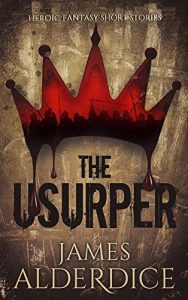 The Usurper by James Alderdice:
The Usurper by James Alderdice:
Introducing the Usurper King…And the Road to the Crown is paved in blood…
The Fates weave a tapestry of life and death for young Gathelaus the Sellsword. Now an unexpected opportunity presents itself for the famed mercenary, he has but to claim the blood red crown…
But once you wear the crown, how long can you hold it until that power is turned against you? Follow Gathelaus on a journey through a life of magic, action and intrigue; battling gods and monsters across a mystic realm …
The Usurper is an action-packed heroic adventure in the vein of classic pulp fiction and heroic fantasy. If you like Conan the Barbarian, The Witcher and Logen Ninefingers along with vengeful sorcery, savage duels, larger-than-life characters, and witty humor, then you’ll love James Alderdice’s barbaric tale.
When the future is broken, the present becomes all we have left….
Genevieve wakes in a broken future. Cryogenically frozen in the hopes that one day her illness will be cured, she awakens to find she was never sick. Her disease is a power – one of the greatest in the galaxy. All will fight to control her, and they will bring the Milky Way to the brink of total destruction.
There’s only man who can save her and everyone else – not that he knows it. A transport captain with a rocky past, Scott will have to find the good in his heart before he can rise to the occasion.
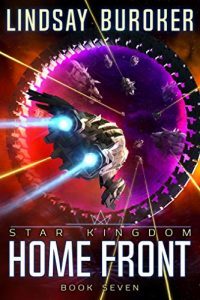 Home Front by Lindsay Buroker:
Home Front by Lindsay Buroker:
Casmir and his allies have struck a devastating blow to the powerful prince who sent invaders into their star system, but war still rages at home. Worse, the prince has escaped with a lethal bioweapon, and he intends to wipe out all human life on Odin. Casmir could lose his parents, his friends, and everyone he holds dear.
On top of all that, the Kingdom fleet commander Jorg has captured two of Casmir’s friends to ensure his “compliance.” But Jorg wants a bioweapon of his own as well as the deadly crushers that Casmir has made. To side with him would be to side with the devil. But if Casmir doesn’t… he may never see his friends alive again.
 Tangled Truths by Lindsay Buroker:
Tangled Truths by Lindsay Buroker:
Dealing with dragons is hard. Dealing with a teenage daughter is even harder.
My new mission involves both. Weird things are happening in Northern Idaho, and my boss is sending me to investigate. Unfortunately, my daughter and ex-husband are vacationing in the town that’s at the center of the trouble. Coincidence? Or is someone targeting them to get at me?
I’m a wanted woman right now. Not only by the criminal werewolves, orcs, and trolls that I’m often hired to kill. But by the Dragon Justice Court.
An organization full of arrogant, powerful dragons is exactly as horrible as it sounds. They’re the last beings you’d want after your family. If I can’t get to the bottom of the mystery and convince the dragons I’m not their enemy, I stand to lose far more than my own life.
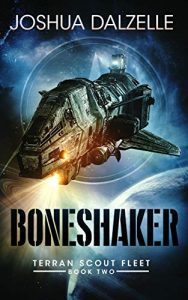 Boneshaker by Joshua Dalzelle:
Boneshaker by Joshua Dalzelle:
Marine First Lieutenant Jacob Brown is bored.
For months he’s been sitting around on an alien planet, waiting for command to recall his scout team so they could rest and be re-outfitted. The team went through hell during their previous mission, losing both their commanding officer and their ship. For now, Jacob was acting CO of Scout Team Obsidian and their ship was a broken down old surplus combat shuttle they’d stolen from narco-smugglers on a planet called Niceen-3.
When command finally does reach out, however, it isn’t to order Obsidian home for some much needed R&R. Instead, they are being reactivated and sent out into the contested space of the recently conquered Eshquarian Empire to track down a single Terran cruiser called the Eagle’s Talon.
The Talon’s captain has gone rogue and is operating within a fleet of ships bent on open rebellion against the quadrant’s only remaining superpower. If that ship is discovered within the rebel fleet, Earth will bear the brunt of the ConFed’s reprisal. Jacob’s team is in a race against time to locate the missing ship and her rogue captain so that a Navy strike force can swoop in and reclaim her… or destroy her.
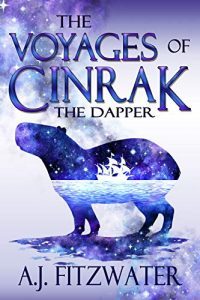 The Voyages of Cinrak the Dapper by A.J. Fitzwater:
The Voyages of Cinrak the Dapper by A.J. Fitzwater:
Dapper. Lesbian. Capybara. Pirate.
Cinrak the Dapper is a keeper of secrets, a righter of wrongs, the saltiest capybara on the sea and a rider of both falling stars and a great glass whale. Join her, her beloveds, the rat Queen Orvilia and the marmot diva Loquolchi, lead soprano of the Theatre Rat-oyal, her loyal cabin kit, Benj the chinchilla, and Agnes, last of the great krakens, as they hunt for treasures of all kinds and find adventures beyond their wildest dreams. Let Sir Julius Vogel Award-winning storyteller A.J. Fitzwater take you on a glorious journey about finding yourself, discovering true love and found family, and exploring the greatest secrets of the deep. Also, dapperness.
The Voyages of Cinrak the Dapper includes seven stories about Cinrak and her crew:
•“Young Cinrak”
•“Perfidy at the Felidae Isles
•“The Wild Ride of the Untamed Stars”
•“Search for the Heart of the Ocean”
•“The Hirsute Pursuit”
•“Cetaceous Secrets of the Jewelled Nadit”
•“Flight of the Hydro Chorus”
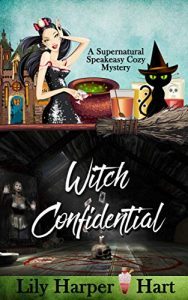 Witch Confidential by Lily Harper Hart:
Witch Confidential by Lily Harper Hart:
The Big Easy is about to be buried in big trouble.
Again.
For Ofelia Archer, that means she’s knee-deep in an investigation … even though she’s not quite sure how she got there.
Zach Sully thinks he’s in for an easy night at Ofelia’s speakeasy – maybe a little flirting as a lead-up to a date included – when a scream in a neighboring abandoned building draws his attention. Upon further investigation, he finds a young woman dead and a real estate developer traumatized.
The dead girl is a street performer who lived on the edge. That’s bad enough, but when voices from the past cause Ofelia to break open a wall, they find more bodies … and a mystery more than ten years in the making.
The new murder mimics the old deaths, but who are the girls in the wall? Ofelia was a child when stories of street girls going missing were prevalent … and then Hurricane Katrina hit and people forgot their fear in the face of a life-changing storm.
Now, all these years later, Ofelia and Sully are determined to uncover what happened then, tie it to what’s happening today, and find vengeance for all of the victims in the here and now.
That’s easier said than done.
There’s a malevolent force stalking the French Quarter and Ofelia suddenly finds herself in the killer’s path. Someone wants to keep a secret, and he or she is willing to kill to make sure that the past stays buried.
Can Ofelia and Sully evade a killer and uncover the truth? It will be a race to the finish to find out.
I used to not believe in witches.
Until I enrolled in Dr. Alondra Johansen’s metaphysical history class. Bryce, Alondra’s super cute teaching assistant, told me my element sign is Earth. I am, in fact, a pragmatic sort of girl. My name is Cadence Hawthorne, but you can call me Katie.
Darkness fell over me and my family during my sophomore year. I thought maybe Alondra could help me with my grief and visions of ghosts. But there was this guy working with her, with a goatee and sardonic smile, who looked more like the devil than a professor. He did terrible things to my best friend, threatening my growing love for Bryce.
Do you believe in ghosts? How ‘bout witches? I do. See, it was at Hawthorne University that I learned all about them. Come take a look in my grimoire. I wrote it all down here in Broomstick.
Content warning: Broomstick is a new adult college paranormal romance containing profanity, sexual scenes, adult situations, and, of course, witchcraft.
 Velocities: Stories by Kathe Koja:
Velocities: Stories by Kathe Koja:
From the award-winning author of The Cipher and Buddha Boy, comes Velocities, Kathe Koja’s second electrifying collection of short fiction. Thirteen stories, two never before published, all flying at the speed of strange.
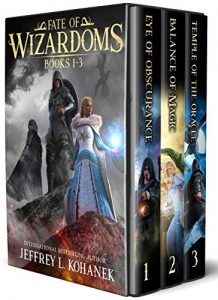 Fate of Wizardoms by Jeffrey L. Kohanek:
Fate of Wizardoms by Jeffrey L. Kohanek:
1,000 pages of magic, adventure, & intrigue. Where wizards rule, magic reigns supreme.
Power. The ambitious thirst for it. But when a power-hungry wizard lord seeks to expand his rule, he triggers events unforeseen.
The balance of magic is altered, races of old return, and beasts of legend stalk the land.
A squad of unlikely heroes armed with magical objects are drawn into the conflict:
Jerrell “Jace” – A clever thief whose outrageous exploits force him to hide his identity.
Narine – A wizardess caught between her mad wizard lord father and jealous brother.
Rhoa – A determined acrobat, armed with enchanted blades and a thirst for revenge.
Rawk – Exiled for urges he cannot control, this dwarf possesses unique magic abilities.
Brogan – Once a renowned warrior, he labors beneath the weight of his regrets.
These characters lead a compelling and memorable cast including ruthless wizards who vie for thrones able to grant the power of a god.
How do you defeat a god?
 Sinfully Delicious by Amanda M. Lee:
Sinfully Delicious by Amanda M. Lee:
Stormy Morgan left her hometown of Shadow Hills, Michigan, with one goal: to write the great American novel and strike it rich. She sold her novel not long after college, did relatively well, and then fell off a cliff into obscurity. Now, without a book contract, she’s back at her family restaurant in a one-stoplight town … and she’s convinced things couldn’t possibly get worse.
That feeling only lasts until her first shift, when on a trip to the storage building behind the restaurant, she literally trips over a body.
Roy Axe, Shadow Hills most hated “Axehole,” died a hard death only feet from the restaurant (and the second-floor apartment Stormy currently resides in). The detective on the case is none other than Hunter Ryan, Stormy’s high school boyfriend, and the man who occasionally still calls to her in dreams. Hunter only cares about solving a mystery – nothing else – so their reunion is tense.
In an attempt to distract herself from what’s happening, Stormy and her cousin Alice get drunk one night and pull out their great-grandmother’s old Ouija board, and it sets off a strange string of events, most of which seem magical … if you believe in that sort of thing, and Stormy isn’t sure she does.
Stormy has trouble deciding which problem to focus on, so she avoids them all until things start blowing up in her face.
Shadow Hills is a small town but the secrets that plague it run deep. Stormy is a woman – or maybe a witch – lost in a sea of magic and despair … but murder might just lead her out of it. That is if she can survive to solve the case, that is.
Stranded in space: no fuel, no way home…and no one coming to help.Nineteen-year-old Kitra Yilmaz dreams of traveling the galaxy like her Ambassador mother. But soaring in her glider is the closest she can get to touching the stars–until she stakes her inheritance on a salvage Navy spaceship.On its shakedown cruise, Kitra’s ship plunges into hyperspace, stranding Kitra and her crew light years away. Tensions rise between Kitra and her shipmates: the handsome programmer, Fareedh; Marta, biologist and Kitra’s ex-girlfriend; Peter, the panicking engineer, and the oddball alien navigator, Pinky.Now, running low on air and food, it’ll take all of them working together to get back home.
[image error] Ex Nihilo by Nazri Noor:
In the beginning…
Mason Albrecht was a regular kid until the day he turned eighteen, when golden flames seared holy sigils into his skin, when the angels came to exterminate him. The demons came not long after, hungry for a taste of his nephilim flesh.
Fighting off heaven and hell with his bizarre new gifts, Mason speeds towards the only beacon his awakened eyes can see in a world gone mad: a pillar of light emanating from a distant city, where he may yet find sanctuary… or certain doom.
Ex Nihilo is the prequel to the Sins of the Father urban fantasy series, from Nazri Noor, author of the Darkling Mage saga. Experience Mason’s awakening in Ex Nihilo, a humorous, high-impact supernatural suspense story filled with demons, divinity, and plenty of danger.
On August 5th, 2044, humanity will learn that the number of things we take for granted is almost as limitless as the hubris that guides us.
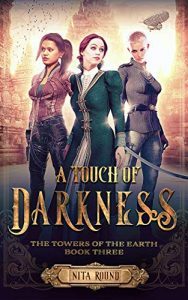 A Touch of Darkness by Nita Round:
A Touch of Darkness by Nita Round:
In the shadows, treachery and betrayal grow unseen.
The state funeral of Princess Olivia at Port Ruth marks the end of the Queen of the Desert’s reign of terror. As Lucinda, Magda and Ascara attend this grand ceremony, all is not as it seems. A storm of secrets and lies emerge from the shadows and the darkness threatens to destroy them all.
No matter where Magda goes, her heritage calls to her. Even when they make their way home, peace and safety are still not theirs. Malice and betrayal, hidden and out of sight, finds the three women and threatens to pull them under the waves of death and pain once more.
For the Trinity of Truth: Raven, Fire and Ice, there can be only one way forward, but at what price?
This is the third in the Towers of the Earth fantasy adventure series.
 Beneath Black Sails by Clare Sager:
Beneath Black Sails by Clare Sager:
Sometimes it takes a pirate to catch a pirate.
With weather magic on her side, Lady Vice is the bane of the high seas, but she isn’t captain of her own ship. Yet. If she can persuade her captain to give her a command, she’ll be in charge of her own fate.
To pay off his family’s debts, Knigh Blackwood hunts pirates for the Royal Navy. And he’s damn good at it. When the bounty on Lady Vice increases, he’s determined to make her face justice, even if that means using unorthodox methods.
Forced to work together, neither can deny their mutual attraction. As they face battles at sea and schemes amongst their crew, they discover hints about a long-lost treasure that could be the answer to both their problems.
But treasure isn’t the only thing buried. Secrets best-forgotten lie in wait that could blast them apart. And the closer Vice and Knigh grow, the greater the threat – to her freedom and to his family. Because for one to succeed, the other must fail.
 Arrested by Magic by Avery Song:
Arrested by Magic by Avery Song:
Homeless at the age of twelve. Misfit among my peers at sixteen. Unemployed by eighteen. I have bad luck, but never thought I’d be in handcuffs by the golden age of twenty.
Some would blame the universe for being in the wrong place at the wrong time, but I know better. So does the Alpha wolf hidden inside me. Our potential is massive, but we can’t get a bloody break in a world full of crime, corruption, and hate…and someone did this to us on purpose.
Misfits like me often fall into traps made by higher shifters, and this is no exception. Five supernatural beings hold the key to my shackles, intent in the belief that my wolf holds the key to something powerful…something lethal.
They may be right.
Imprisonment is inevitable, but behind bars, a new world is waiting for me. One where captivity can be a blessing in disguise, creating the opportunity for my wounded walls to crumble in total submission.
I’m ready for it all. I’ll be a misfit no more. I will rise, and those responsible for my captivity will receive capital punishment at my paws.
 Relics of Eternity by Glynn Stewart:
Relics of Eternity by Glynn Stewart:
The edge of Imperial expansion
Far from Earth and the other homeworlds
Here lie the secrets of ancient gods
Here…there be dragons
Seeking to escape the shadow of Annette Bond’s success, Captain Morgan Casimir has taken a posting on the far side of the A!Tol Imperium. Here she hopes to begin a legend for herself that stands apart from her stepmother, the Duchess.
A chance encounter introduces her to the xenoarchaeologist Rin Dunst—and to the strange mystery cult that tried to silence him. There are darker secrets in these stars than the A!Tol and their human allies ever guessed…and if they can’t find answers, the Precursors’ mistakes might yet destroy the galaxy.
Again.
Ford’s life used to be simple. Travel the post-apocalyptic wasteland, find parts to repair the only working computer in the world, dodge roving marauders, rinse, and repeat. But he is getting a little long in the tooth and life after the end of the world can be hard on the young and old alike. During one journey he comes across a teenage girl named Apinya who enlists him to rescue her captured tribe. He doesn’t want to help but something tells him that this girl, and the USB drive hanging around her neck, may have answers to the questions that have plagued him his entire life. Where did the people who lived here before go? How did their world end? And more importantly, will it happen again?
What if you were told you could re-write your past to solve the problems of your present life and save your future?
Farah Wendell is scared. Her life is falling apart. She’s started waking up in increasingly terrifying and dangerous situations with no memory of how she got there and no understanding of why these events are happening.
She’s desperate to find out the cause and to put a stop to it.
And then a mysterious visitor appears to offer Farah hope.
But could you trust a stranger who says that the solution to your problems lies in lucid dreams, time travel and telepathy? Or when they tell you the cause of this new horror in your life is a sadistic psychopathic killer from a dystopian future?
Can Farah channel her inner female heroine to save her family and her own future?
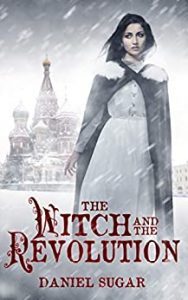 The Witch and the Revolution by Daniel Sugar:
The Witch and the Revolution by Daniel Sugar:
As the Tsar’s subjects turn against him, Lilly Parris races to save Anastasia Romanov and her brother Alexis – the heir to the Russian throne.
The Witch and the Revolution is a fast-paced, brand-new take on the Russian Revolution.
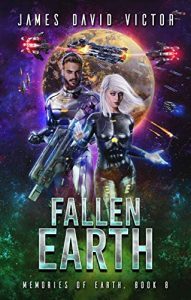 Fallen Earth by James David Victor:
Fallen Earth by James David Victor:
Sometimes you just have to go back to where the problem all started to find a solution
The Earth has been lost to time, but there are those that believe it is the key to the future. When Anders, Dalia, and their team bet the fate of the galaxy, it becomes their only chance at survival. Can humanities ancient home save their future or will mankind fall the same way Earth did so many centuries ago?
Fallen Earth is the eighth book in the Memories of Earth space opera series. If you enjoy stories in fantastic worlds of aliens, space travel, and genetic engineering, the Memories of Earth series will be right up your alley.
 Arterial Bloom, edited by Mercedes M. Yardley:
Arterial Bloom, edited by Mercedes M. Yardley:
Lush. Brutal.
Beautiful. Visceral.
Crystal Lake Publishing proudly presents Arterial Bloom, an artful juxtaposition of the magnificence and macabre that exist within mankind. Each tale in this collection is resplendent with beauty, teeth, and heart.
Edited by the Bram Stoker Award-winning writer Mercedes M. Yardley, Arterial Bloom is a literary experience featuring 16 stories from some of the most compelling dark authors writing today.
With a foreword by HWA Lifetime Achievement Award Recipient Linda D. Addison, you are invited to step inside and let the grim flowers wind themselves comfortably around your bones.
The line-up includes:
The Stone Door by Jimmy Bernard
Dog (Does Not) Eat Dog by Grant Longstaff
Kudzu Stories by Linda J. Marshall
Dead Letters by Christopher Barzak
The Darker Side of Grief by Naching T. Kassa
Welcome to My Autumn by Daniel Crow
Still Life by Kelli Owen
Three Masks by Armand Rosamilia
Doodlebug by John Boden
Happy Pills by Todd Keisling
What Remained of Her by Jennifer Loring
Blue Was Her Favorite Color by Dino Parenti
In the Loop by Ken Liu
The Making of Mary by Steven Pirie
Mouths Filled with Sea Water by Jonathan Cosgrove
Rotten by Carina Bissett
 Send to Kindle
Send to Kindle
April 28, 2020
Retro Review: “Far Centaurus” by A.E. van Vogt
[image error]I’m continuing my reviews of the 1945 Retro Hugo finalists with “Far Centaurus”, a science fiction short story by A.E. van Vogt that was published in the January 1944 issue of Astounding Science Fiction and is a finalist for the 1945 Retro Hugo Award. The story may be read online here. This review will also be crossposted to Retro Science Fiction Reviews.
Warning: Spoilers beyond this point.
“Far Centaurus” starts with the first person narrator – we later learn that his name is Bill Endicott – awakening from suspended animation. Over the next page or so, we learn that he is a crewmember aboard a sublight spaceship bound for Alpha Centauri and that he has been asleep for fifty-three years, seven months and two days. Our narrator muses that everybody he knew back on Earth, including his old classmates and the girl he kissed at a party just before take-off, are all old or dead now, while he is unchanged due to a handwavium medication called “the Eternity drug”.
While Bill eats some soup, we learn that the four crewmembers – all men, of course, and all college friends – are woken up approximately every fifty years for brief periods to look after the ship, before taking another dose of the drug and going back to sleep. Altogether, the trip to Alpha Centauri will take five hundred years.
However, the Eternity drug has a certain failure rate, as our narrator finds out to his shock, when he finds one of his fellow crewmembers – Pelham, inventor of the Eternity drug – dead in his quarters. There is a grisly moment, as Bill tries to prepare Pelham’s body for a space burial, only that the body is so badly decayed that pieces keep falling off. Then Bill radios his report to Earth, where it will be received in five months. He also enters Pelham’s death as well as a note for the next crewmember to be woken, engineer Jimmy Renfrew, into the ship’s log. Then he goes back to sleep, this time for one hundred and fifty years.
There is a jump ahead in time and our narrator Bill wakes up again. This time, two hundred and one years have passed since take-off. Bill immediately heads for the log book to see what his fellow crewmembers have written. Jimmy Renfrew, the next to wake, has only logged instrument and made no personal comments at all. His entry reads like a robot’s, Bill muses. Even the death of Pelham, who was a close friend of Renfrew’s, doesn’t seem to bother him. This worries Bill, because Jimmy Renfrew was always a sensitive soul.
Bill is not the only one worried about Renfrew. For the other crewmember, Ned Blake, has left a letter for Bill in the log book, instructing him to tear out and destroy the sheet when he has read it. In this letter, Blake confesses his worries about Renfrew’s mental state. Back on Earth, Renfrew was rich, charming, a brilliant engineer and a ladies man (we learn that he has three ex-wives who are not so ex, at least according to Blake). Both Blake and Bill were already worried about Renfrew’s reaction upon awakening from his drug-induced sleep only to realise that everybody he’d ever loved, including the three ex-wives, was dead. They assumed that Pelham would act as psychological support for Renfrew, only that Pelham is dead, too. Blake closes the letter by urging Bill to think what to do about the unstable Renfrew, since they will have to live with him, once the ship reaches Alpha Centauri.
Bill destroys the letter as instructed, does his routine work and checks on Blake and Renfrew who are asleep and still alive. He still has no idea what to do about Renfrew, but there still is time, so our narrator goes to sleep for the third time.
When Bill wakes for the third time, the ship’s alarm is ringing. Once he makes it to the cockpit, he sees a great ball of fire on the viewscreen, which set off the proximity alarm. Bill initially thinks that the ball of fire is an unknown star, but he eventually realises that it is a giant spaceship on fire. He assumes that the spaceship hails from Alpha or Proxima Centauri, which must have inhabited planets. Thrilled that they won’t be all alone when they reach Alpha Centauri, but that they will encounter an alien civilisation there, Bill goes back to sleep.
The next time Bill wakes up, he is not alone. The ship is about to reach its destination and Ned Blake is already up and walking about with a grim look on his face. He feeds Bill, who’s still dizzy from his long sleep, soup and informs him that Renfrew has gone mad and had to be restrained. Bill is shocked, for while Renfrew was prone to depression, he didn’t expect that the knowledge that everybody he ever knew and loved was dead would drive him to insanity.
“It isn’t only that,” Blake says and tells Bill to prepare for the greatest shock he ever had. For when Blake awoke and saw Bill’s report about the strange spaceship, he checked if he could receive some radio signals from Alpha Centauri. He found hundreds of radio stations, all broadcasting with perfect clarity. Renfrew couldn’t take the news and promptly went mad. Blake also informs Bill that a ship is coming from Alpha Centauri to meet them. Blake still hasn’t told Bill what precisely the problem is, but Bill – and at least this reader – can already guess what’s up.
Spoiler alert: In the five hundred years it took Bill, Blake and Renfrew to get to Alpha Centauri, humans developed lightspeed and got there before them. The Alpha Centauri system is settled and has been for a long time. Though the Centauri were kind enough to name four planets orbiting Alpha Centauri A and B as well as Proxima Centauri after the four brave explorers who were late to arrive.
Not long after this revelation, Bill and Blake are met by a giant spaceship and instructed to land in its onboard hangar. This ship, they learn, can make the trip from Alpha Centauri to Earth – a trip which took Bill, Blake and Renfrew five hundred years – in three hours.
Aboard this ship they are ushered into a luxurious parlour, where they meet a heavily perfumed man called Casellahat, who informs them that he has studied the language and customs of the mid American period since early childhood solely for the purpose of welcoming the visitors from the past. Because not only has technology advanced in five hundred years, language has changed, too. The visitors from the past are honoured guests on Alpha Centauri and will be given a luxurious penthouse and well as five million credits. However, Casellahat keeps wrinkling his nose and finally tells Blake and Bill that they should not interact with the Centauri population directly, because they stink. Which is really mean. After all, Blake and Bill haven’t had a shower in five hundred years, so of course they smell.
The Centauri have been able to restore Renfrew’s mind to sanity. Bill and Blake hug him, overjoyed to see their friend finally well again. In fact, Renfrew is well enough to ask Casellahat science questions, which leads to roughly two pages of the technobabble that John W. Campbell so loved and most others skip (Leigh Brackett said so in 1944). There is something about bachelor suns that don’t tolerate anything in orbit around them and their tenuous connection to the universe. We also get a crash course in the development of the interstellar drive and the history of the settlement of Alpha Centauri. Oh yes, and the burning spaceship that Bill saw upon his third awakening was a tragic accident, but one that advanced spaceship technology a lot, so they shouldn’t feel bad about accidentally having caused the explosion.
Bill and Blake are feeling morose, because they still have a good fifty years or so left to live in a world where other people, including women, find them disgusting and where they cannot even figure out how the simplest machines work. They are torn out of their ruminations by Renfrew who announces that he has purchased a spaceship and that all three of them will go on a trip.
Bill and Blake go along with the plan, but even the wonders of cruising through space cannot shake the melancholy the two of them feel. Only Renfrew is permanently cheerful, but then Renfrew was mentally unstable to begin with.
One day, Renfrew enters Bill’s cabin with a gun in his hand. He ties up Bill and Blake, so they won’t interfere with his plan. Now Bill – and the reader – finally learns that the Centauri psychologists managed to cure Renfrew by telling him that Bill and Blake had gone insane because of the shock. The sense of responsibility for his friends shocked Renfrew back into sanity and now he has found an ingenious solution to their dilemma. He is going to pilot the spaceship into one of the bachelor suns that Renfrew and Casellahat technobabbled about earlier.
Bill and Blake manage to free themselves and try to stop him – after all, Renfrew is insane and even if they wasted their lives on a futile dream, they don’t want to die just yet. But try as they might, they cannot get the ship into orbit around the bachelor sun, because bachelor suns don’t like anything orbiting them. Meanwhile, Renfrew babbles something about how contact with the bachelor and its tenuous hold upon the universe will throw them all back in time by four hundred and ninety years and seven months.
Bill finally realises just what Renfrew is planning. He’s taking them all back to their own time, one and a half years after they left. “But what about the ship?” he asks. Wouldn’t bringing back a hyper-advanced starship from the future change the course of history?
Renfrew says that won’t be a problem, because no one can understand how the future technology works anyway. They’ll keep the ship for their own use to jaunt around the universe and otherwise let history take its course.
Bill is still unsure, but Renfrew tells him that the girl he kissed at the good-bye party just before the launch, the girl Bill has been pining for every time he woke up again, that girl will be sitting right next to him, when Bill’s first radio message from space finally reaches Earth some fifty years from now.
The story ends with the line, “That’s exactly what happened”
[image error]Now I have to admit that I’m not a huge A.E. van Vogt fan. I know that he was one of the most popular authors of the golden age, but his stories just don’t work for me. And I certainly tried. I tried Slan and The Worlds of Null-A and The Weapon Shop/The Weapon Makers and didn’t care for any of them. As a result, my reaction whenever A.E. van Vogt puts in an appearance on the Retro Hugo ballot is, “Oh no, I have to wade through another one of those.” I have much the same reaction to C.S. Lewis’ appearances on the Retro Hugo ballot, by the way.
Coincidentally, I was stunned that A.E. van Vogt, who would have celebrated his 108th birthday on April 26, lived until 2000, until the ripe old age of 88. For van Vogt is so associated with the 1940s and 1950s that I assumed he died much earlier. According to ISFDB, his publication frequency drops drastically from the mid 1950s on, but he still published stories and novels well into the 1980s.
There are three A.E. van Vogt works on the 1945 Retro Hugo ballot, one of them co-written with his wife E. Mayne Hull. I decided to start with “Far Centaurus”, because it is the shortest. To my surprise, I found that I liked the story. It’s probably the best story by van Vogt I have read so far. True, the story does suffer from van Vogt’s well-known weaknesses such as inconsistent or rather non-existent plotting and random plot twists every eight hundred words or so. But by some miracle, van Vogt’s random plotting technique works this time around and results in a satisfying story.
As Paul Fraser points out in his review, the best part of the story by far is the first half with Bill waking up every couple of decades aboard the starship. Van Vogt’s prose tends towards the purple, but he does manage to convey the sheer scale of the journey that our three explorers are undertaking very well. He also manages to convey the sense of loneliness and isolation that Bill feels as he thinks about the people he’s known who are now old and later dead and of the girl he kissed the night before and fell in love with. This girl is the only female character in the entire story, by the way, and she never even gets a name.
The clock announcing how much time has passed and Alpha Centauri growing brighter and bigger, as our sun grows dimmer in the viewport are nice touches, as are the notes that Bill and Blake leave for each other. The death of Pelham is a genuine shock and for a moment I assumed we were in for a murder mystery in space a la 2018 Hugo finalist Six Wakes by Mur Lafferty, especially since one of our three explorers is supposedly mentally ill. However, Six Wakes is a story that could only happen after stories about century long space journey at sublight speeds had become an old enough hat that a sublight ship could serve as a backdrop for a completely different story.
However, in 1944 a journey through space lasting five hundred years was still a brand-new idea and must have teased that good old sense of wonder hard. After all, golden age science fiction rarely ventured beyond the boundaries of the solar system. With so much excitement and adventure to be found on Venus, Mars, Mercury, Jupiter and elsewhere, Alpha Centauri is indeed far out. And indeed, several people who first read the story when they were young report how it blew their minds. I imagine it would have blown mine as well, if I had first read it at fifteen.
Talking of which, I was surprised that it was already known in 1944 that Alpha Centauri is a triple star system consisting of Alpha Centauri A and B as well as Proxima Centauri, since I thought this was a later observation. However, it turns out that the binary nature of Alpha Centauri was discovered as early as 1689 by Jean Richaud. Proxima Centauri was discovered in 1915 by Robert T.A. Innes. So that part of the story was based on known science. Even the fact that the triple star system has habitable planets is not that far out, since a potentially habitable exo-planet was discovered in orbit around Proxima Centauri in 2016.
[image error]Most authors would probably have ended the story with the revelation that later generations of humans had beaten our three brave explorers to Alpha Centauri and that the system had long since been colonised – a revelation that likely was a lot more shocking in 1944 than today.
A.E. van Vogt, however, just keeps on writing and takes a story into a completely new, if not entirely unexpected direction, as our three explorers finally reach their destination and find that they don’t fit into the brave new world of Alpha Centauri at all. Not only does everybody around them think they smell horrible, they also cannot understand the local language, let alone the most basic principles of science. Of course, you cannot blame them for the latter, since the science of bachelor stars and adeledicnander stardrives is complete and utter gobbledegook.
Once the three got on the starship towards the end, I expected the story to go for a downer ending with a triple suicide in the flaming heart of the bachelor star. But maybe I shouldn’t have skimmed over the page of technobabble earlier in the story, because that’s not what happens at all. Instead, Jimmy Renfrew – who clearly is the most brilliant of the three explorers and probably never was mentally ill at all – has found a way to take them all back to a time they understand.
And so the story comes to a neat and surprisingly satisfying ending. Steve J. Wright points out in his review that given van Vogt’s plotting or lack thereof, the fact that the story comes to a satisfying ending is most likely an accident. Nonetheless, it works.
Everybody gets home, Casellahat is probably very relieved to be rid of those smelly ancient humans and Bill gets the girl he’s been pining after for five hundred years. Of course, it’s amazing that the girl waited for him for one and a half years, especially since she thought that Bill was gone forever on a five hundred year trip to Alpha Centauri. Not to mention that she said, “A kiss for the ugly one, too” just before she kissed Bill, which doesn’t exactly sound like the prelude to a great, time- and space-spanning romance. On the other hand, Bill did pine for her for five hundred years and flew straight into a star to get back to her, which should soften even the hardest of hearts. And indeed, Adventures Fantastic notes in his review that the last two paragraphs stuck with him for a long time.
[image error]As so often with science fiction stories of the golden age, particularly those published in Astounding, the characters are largely cyphers. We learn next to nothing about our narrator Bill except that he ended up on the expedition team, because he was friends with the other three explorers in college, and that he pines after a girl he kissed at a party the night before take-off. We don’t even know what he looks like, except that he’s apparently less attractive than his friends. Ned Blake is even more thinly sketched and basically serves only as a sounding board for Bill. Jimmy Renfrew gets a bit more characterisation and we even learn what he looks like. However, we only ever see Jimmy through the eyes of Bill and Ned Blake who to equal parts admire Jimmy and are jealous of him, because he is rich, brilliant, handsome and gets all the girls. It’s not even clear if Jimmy Renfrew truly was mentally ill or whether Bill and Blake just think that he is.
In many ways, the idea of four friends, two of whom just happen to be brilliant scientists, building a spaceship together to explore the cosmos (like you do) is a throwback to the very early days of science fiction, when scientists/explorers like Richard Seaton or Hans Zarkov built spaceships in their backyard to explore the universe. By 1944, it would have been obvious that space travel would not be achieved by enthusiasts tinkering in their garages. Though the trope of brilliant scientists building spaceships and taking their friends for a ride into space without waiting for official authorisation did last well into the era of actual space exploration. After all, this is the origin story of the Fantastic Four in 1960 (and we know that Stan Lee and Jack Kirby were heavily drawing on pulp science fiction). In fact, I now imagine Bill looking like Ben Grimm pre-transformation. After all, he is “the ugly one”.
This is probably the most stereotypically Campbellian story on the 1945 Retro Hugo ballot. We have a trio of competent men, even if one them may be mentally ill (and let’s not forget that Campbell was very interested in psychology and hoped to turn it into a more exact science, so the cure narrative would have appealed to him). We have humans triumphing over adversity as well as a positive view of human progress – after all, what our explorers find on Far Centaurus are not aliens, but advanced humans. We have neat central idea, which is grounded in the actual science of the day, and a lot of technobabble, which is not connected to any actual science at all.
On the other hand, the prevailing mood of the story is not one of boundless optimism and marvel at human ingenuity – no, it’s melancholy. Melancholy at having left everybody and everything they knew behind, melancholy at no longer fitting into the world of the far future (compare this e.g. to Buck Rogers who becomes a hero within days of waking up in the future). Come to think of it, melancholy was the prevailing mood in several of the stories from Astounding that I read for the Retro Reviews project (“No Woman Born”, “The Children’s Hour”, “Desertion”, “The Huddling Place”, even the Galactic Empire section of “The Big and the Little”), which is certainly interesting. Finally, the story ends not in the far future on Alpha Centauri, but in the much nearer future with an elderly couple looking up at the stars.
In fact, I have come to suspect by now that our idea of what Campbellian science fiction was like is very much a myth. Because so far, pretty much every story that was published in Astounding Science Fiction that I read for the Retro Reviews project was atypical in some way.
“Far Centaurus” is a surprisingly good story from an author whose work I normally don’t much care for. It has been reprinted several times over the years and Isaac Asimov and Martin H. Greenberg also selected it for the 1944 volume of their Great Science Fiction Stories anthology series. “Far Centaurus” certainly a worthy Retro Hugo finalist. Let’s hope that the other two van Vogt stories on the ballot are as good as this one.
 Send to Kindle
Send to Kindle
Cora Buhlert's Blog
- Cora Buhlert's profile
- 14 followers


